100 Fun Bits of Trivia Guaranteed to Make Your Day

If there’s one thing most kids have in abundance, it’s a sense of awe. Everything is new and exciting when you’re a child—but often that wide-eyed curiosity starts to fade over time, which surely shouldn’t always have to be the case. And with that in mind, we’ve rounded up 100 bits of fun trivia that will make your day and restore that childlike sense of wonder. So park your cynicism at the door and read on to be reminded how awe-inspiring the world really is.
1
A reservoir in space holds 140 trillion times the amount of water in Earth’s oceans.
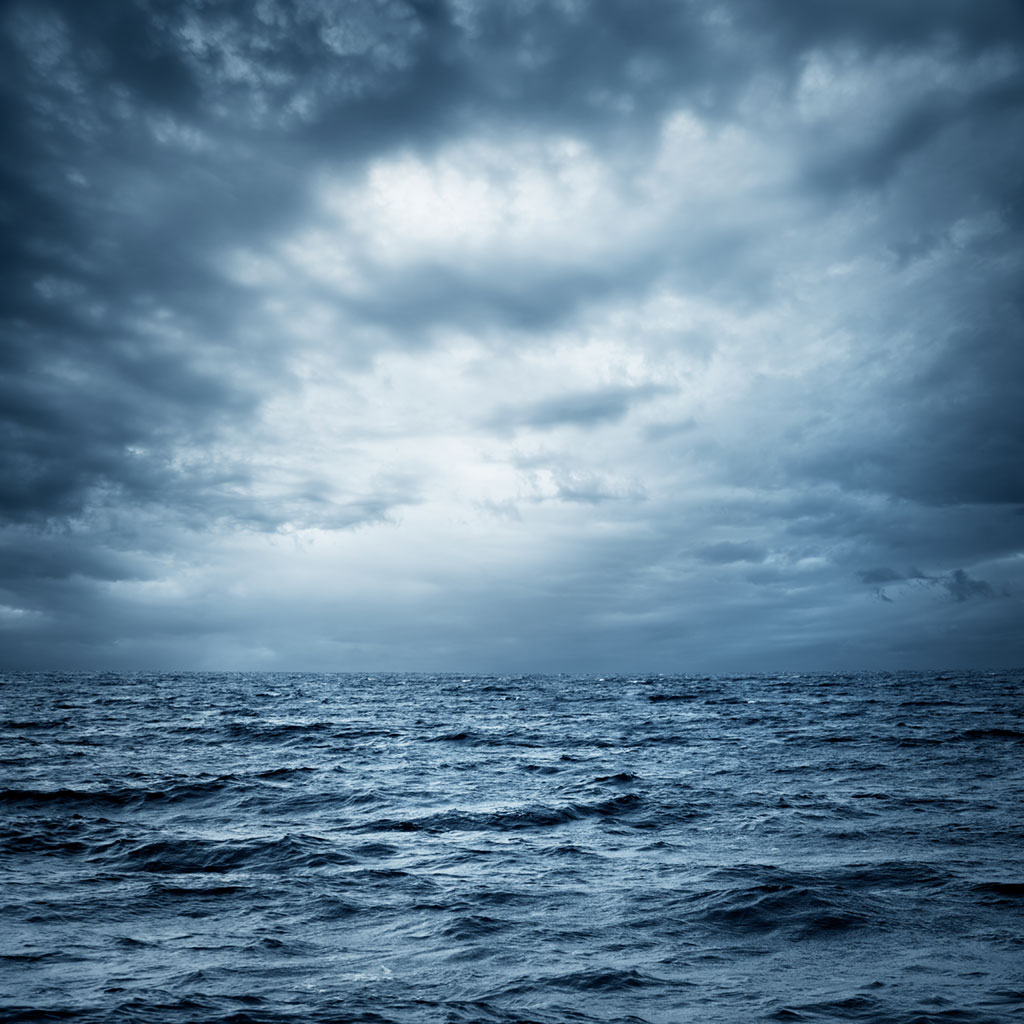
NASA has found some pretty incredible things in space, and that includes a floating reservoir of water that holds the equivalent of 140 trillion times all the water that’s in Earth’s oceans. What makes it even more amazing is the fact that the reservoir surrounds a giant black hole.
More than 12 billion light-years away from Earth, the reservoir is more proof “that water is pervasive throughout the universe,” says Matt Bradford, a scientist at NASA’s Jet Propulsion Laboratory in Pasadena, California.
2
The word “muscle” comes from a Latin term meaning “little mouse.”

Bend your arm at the elbow and flex. What do you see when you look at your bicep? The ancient Romans apparently saw the resemblance of a tiny rodent, which is why it’s called a “muscle,” a word derived from the Latin term musculus—meaning “little mouse,” according to Merriam-Webster.
3
Tic Tac mints are named after the sound their container makes.

In 1970, Ferrero was looking to replace “Refreshing Mints” as the name of its now iconic mini mouth fresheners. Instead of going with a similarly straightforward approach, the brand says the name we all know now was inspired by the tic and the tac sounds heard when you open and close the little plastic container the mints come in.
4
Dr. Seuss wrote Green Eggs and Ham as part of a bet.
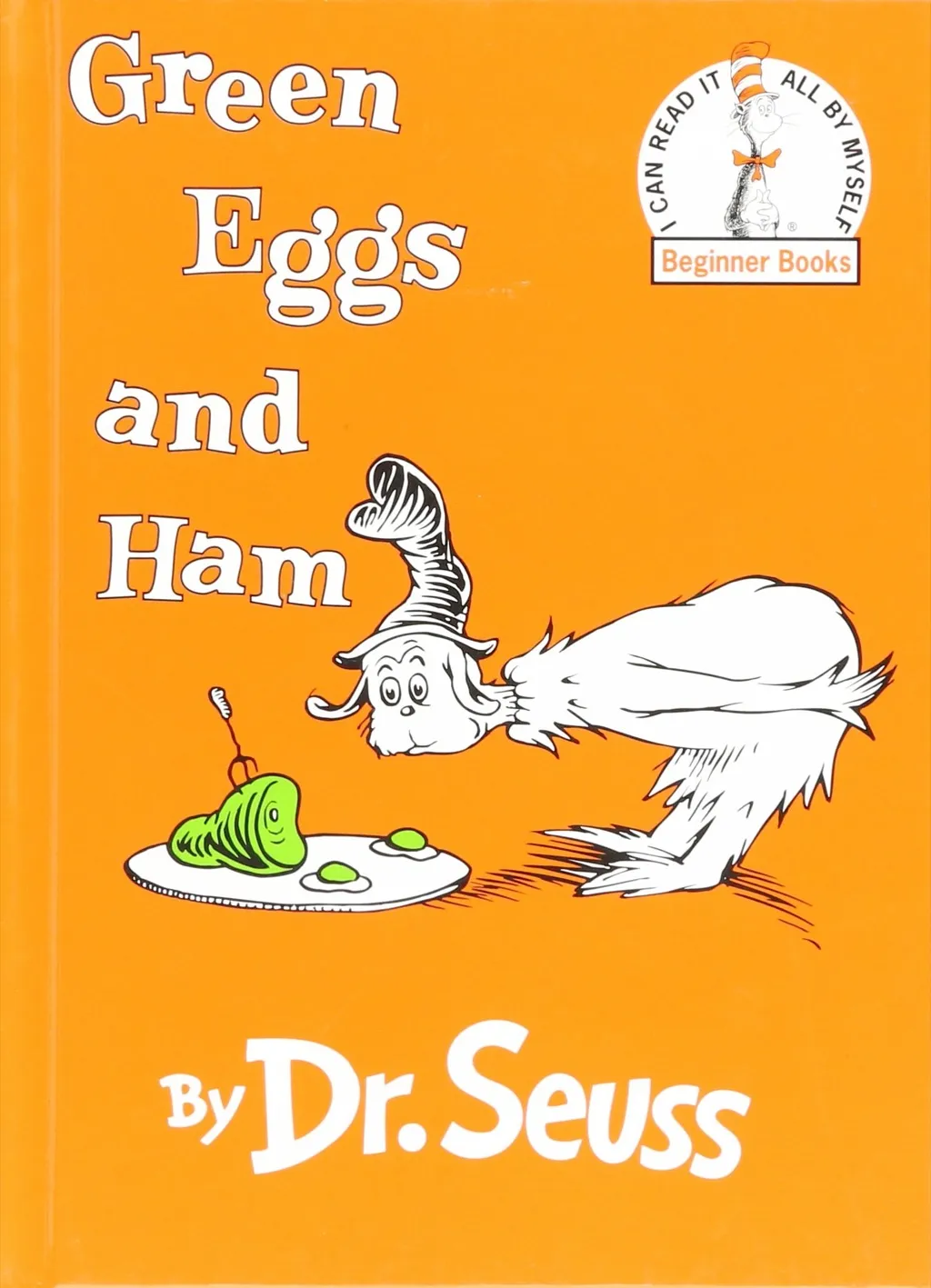
The Cat in the Hat was published in 1957 and used a mere 236 words to tell the quirky feline’s fantastical story. However, the book’s author, Dr. Seuss, topped that feat with even fewer words when his publisher, Bennett Cerf, bet him that he couldn’t write a book using 50 words or less. Green Eggs and Ham hit bookstores three years later and uses exactly 50 words.
5
Peanuts can be used to make dynamite.
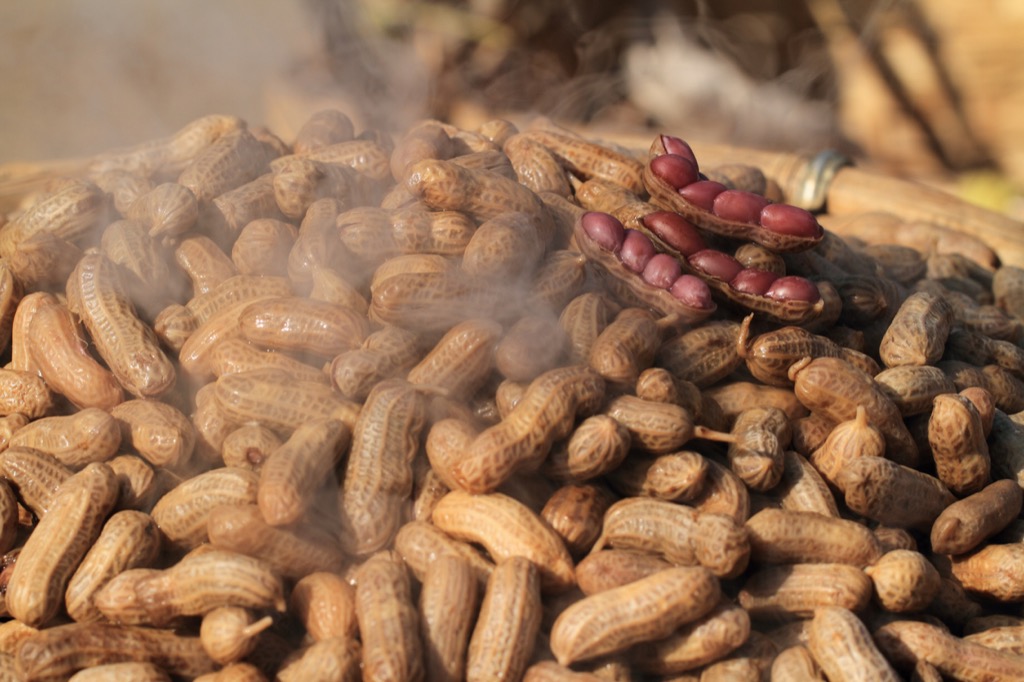
Obviously, peanuts are a tasty snack—as long as you’re not allergic to them, that is. But did you know they can also be used to make dynamite? When extracted, peanut oil can be turned into glycerol, which can then make nitroglycerine, an unstable explosive substance used in dynamite. In a safer state, glycerol is also used for soaps, creams, and various food products.
6
The largest volcano in the solar system is three times taller than Mount Everest.
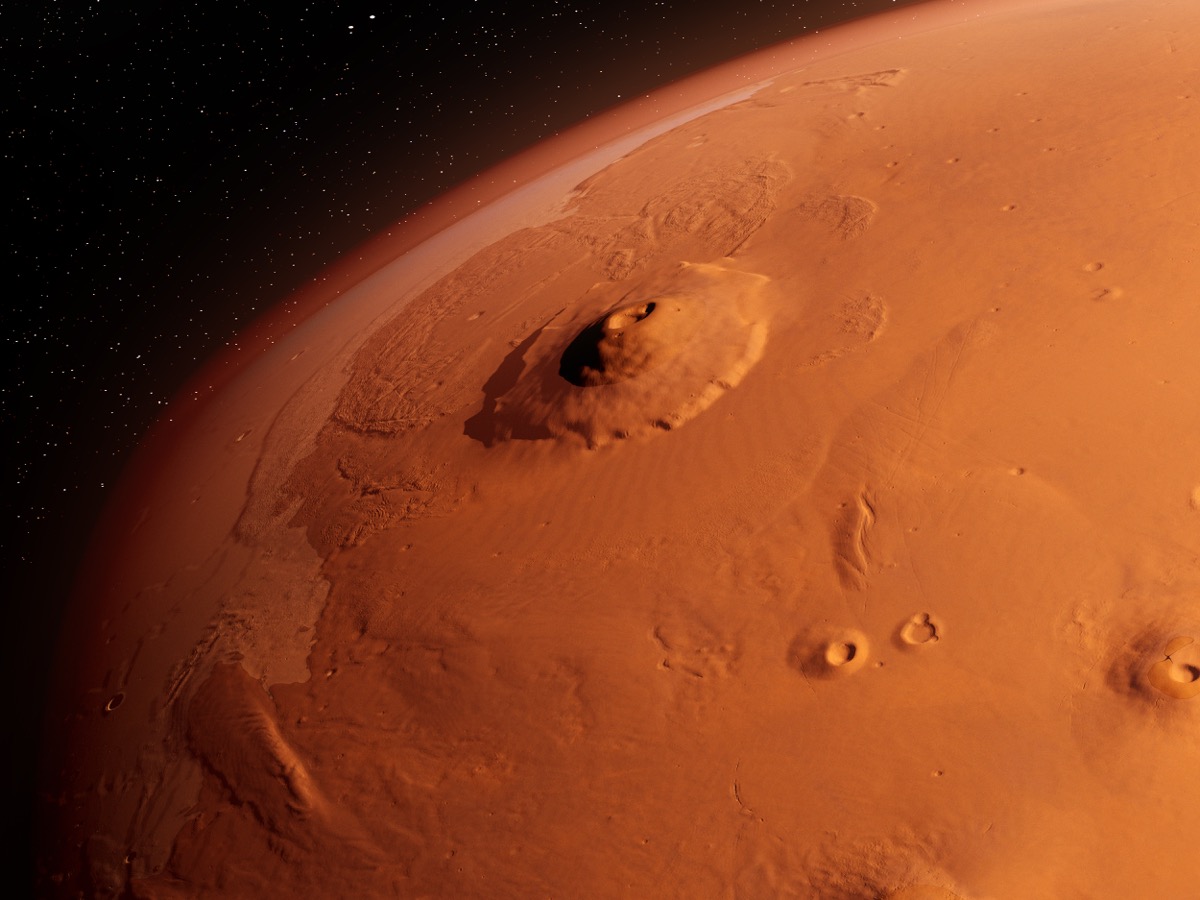
Mount Everest is the tallest mountain on earth, reaching 5.5 miles into the sky. However, you’d need to stack three Everests on top of each other in order to create something as massive as Mars’ Olympus Mons, the largest volcano in the solar system. The enormous volcano is 16 miles tall and stretches 374 miles wide—approximately the same size as the state of Arizona, according to NASA.
7
An 11-year-old is responsible for naming Pluto.
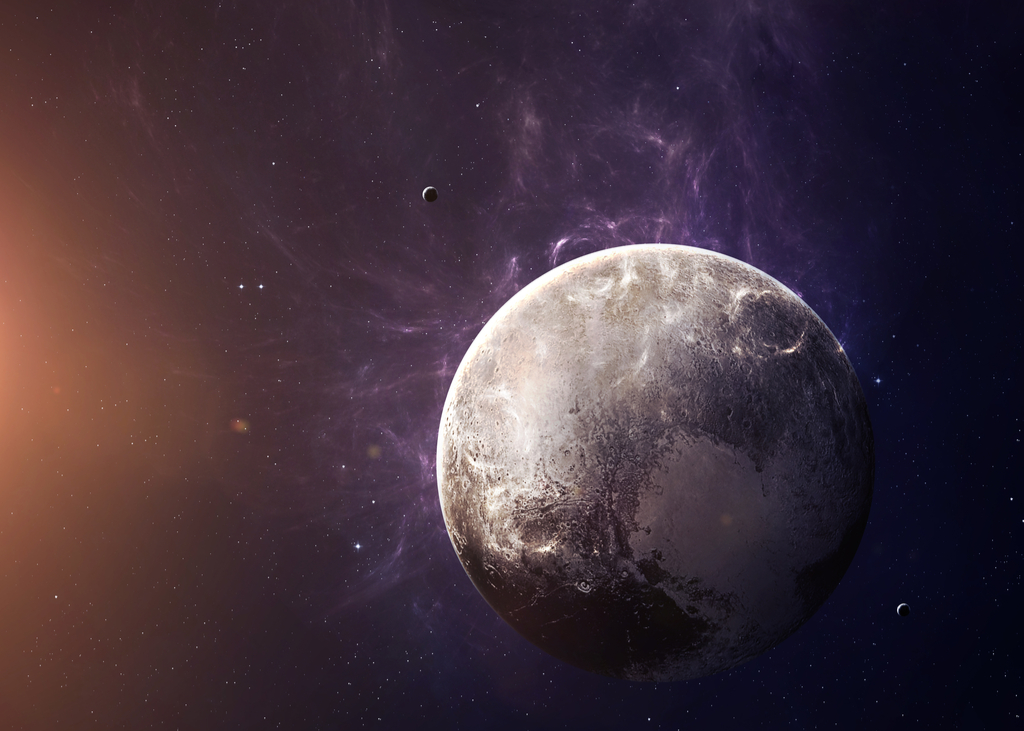
In 1930, the Royal Astronomical Society (RAS) was struggling to come up with a name for a newly-discovered planet. They considered Minerva, Zeus, Atlas, and Persephone—but it was 11-year-old Venetia Burney Phair who suggested Pluto, inspired by the god of the underworld. When the idea eventually reached RAS with the help of the girl’s connected family—her librarian grandfather knew many astronomers—they loved it and ultimately decided to use the suggestion.
8
Armadillos swallow air to become buoyant when they swim.
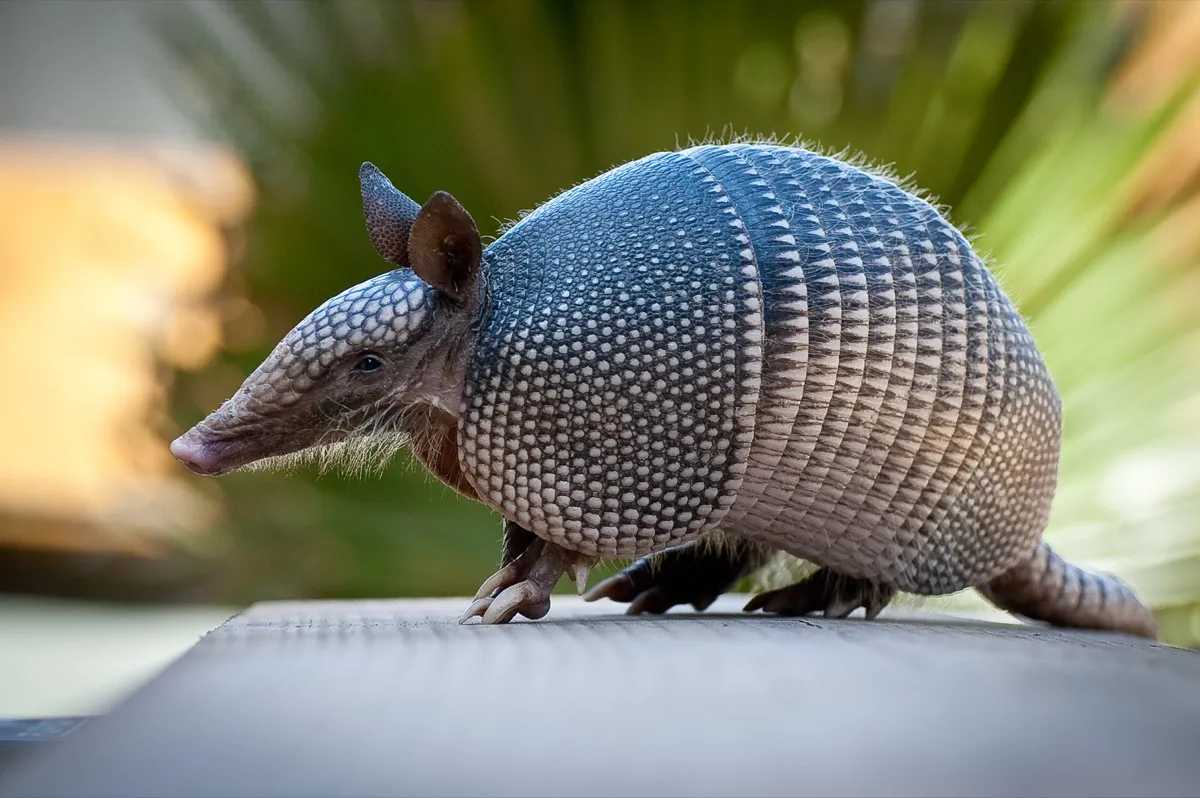
When armadillos go swimming, they don’t need a flotation device to keep them from sinking—they are the flotation device. To stay afloat, the creatures swallow air to make themselves buoyant, according to the Library of Congress. However, they also have another option, which involves expelling air so they can sink and walk across the bottom of a body of water. Stunningly, armadillos can hold their breath for six minutes or more.
9
People write love letters to trees in Australia via email.
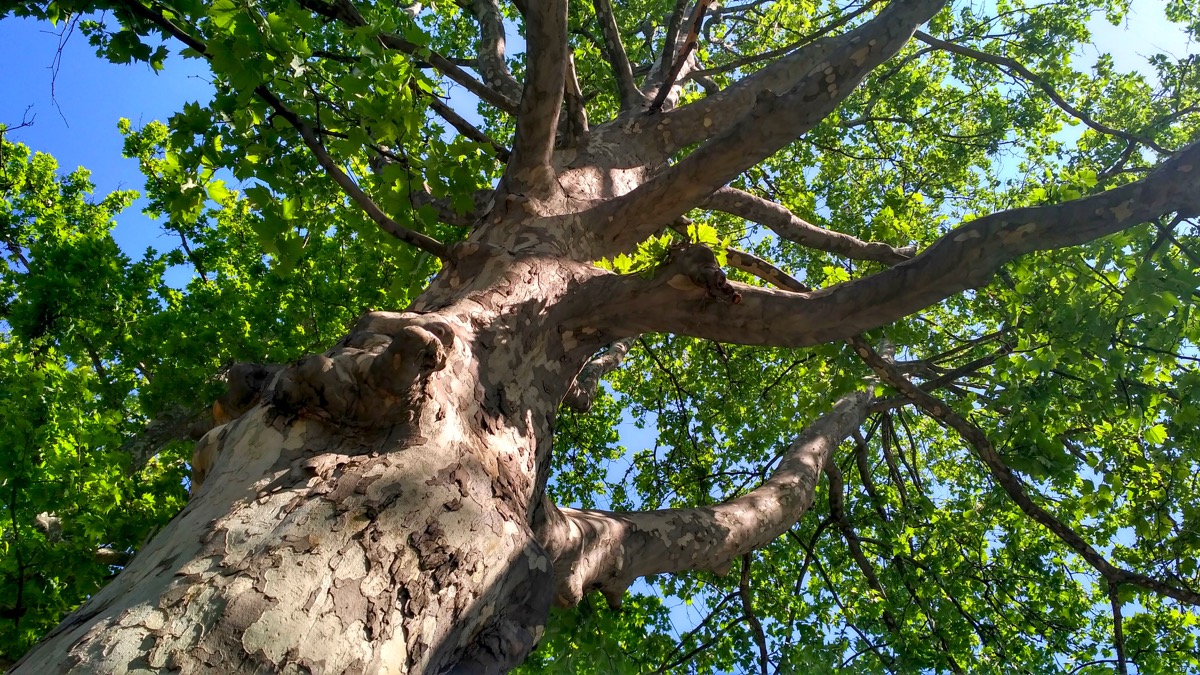
The city of Melbourne, Australia, wants to take care of its trees—so much so that in 2013, they assigned each one an email address so that the public could report any problems—like dangerous branches—that they noticed.
However, instead of sending messages about issues, people began writing love letters to the trees. “My dearest Ulmus,” one note began, according to The Atlantic. “As I was leaving St. Mary’s College today I was struck, not by a branch, but by your radiant beauty. You must get these messages all the time. You’re such an attractive tree.”
10
Where the Wild Things Are was supposed to have been about horses—but the illustrator couldn’t draw them.
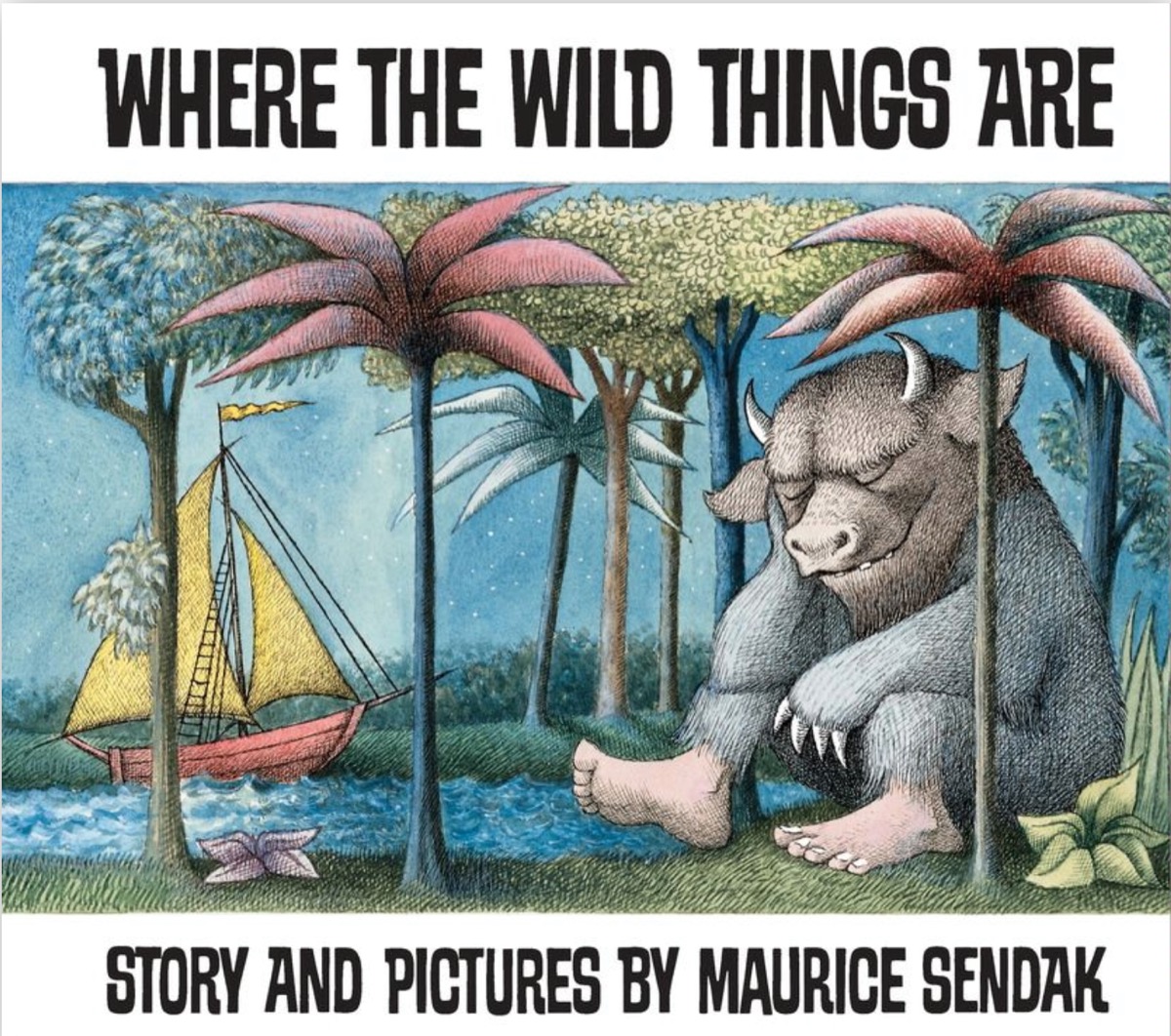
Maurice Sendak’s Where the Wild Things Are is a beloved children’s book from 1963 that was inspired by the author’s own childhood. But it wasn’t always about the so-called “wild things.” The book was originally going to be about a young boy who finds himself in a land filled with wild horses. Although Sendak’s editor loved the idea, there was one problem: Sendak, who was also the book’s illustrator, couldn’t draw horses. However, he was able to draw “wild things”—and so the entire premise of the book changed.
11
On Mars, sunsets are blue.
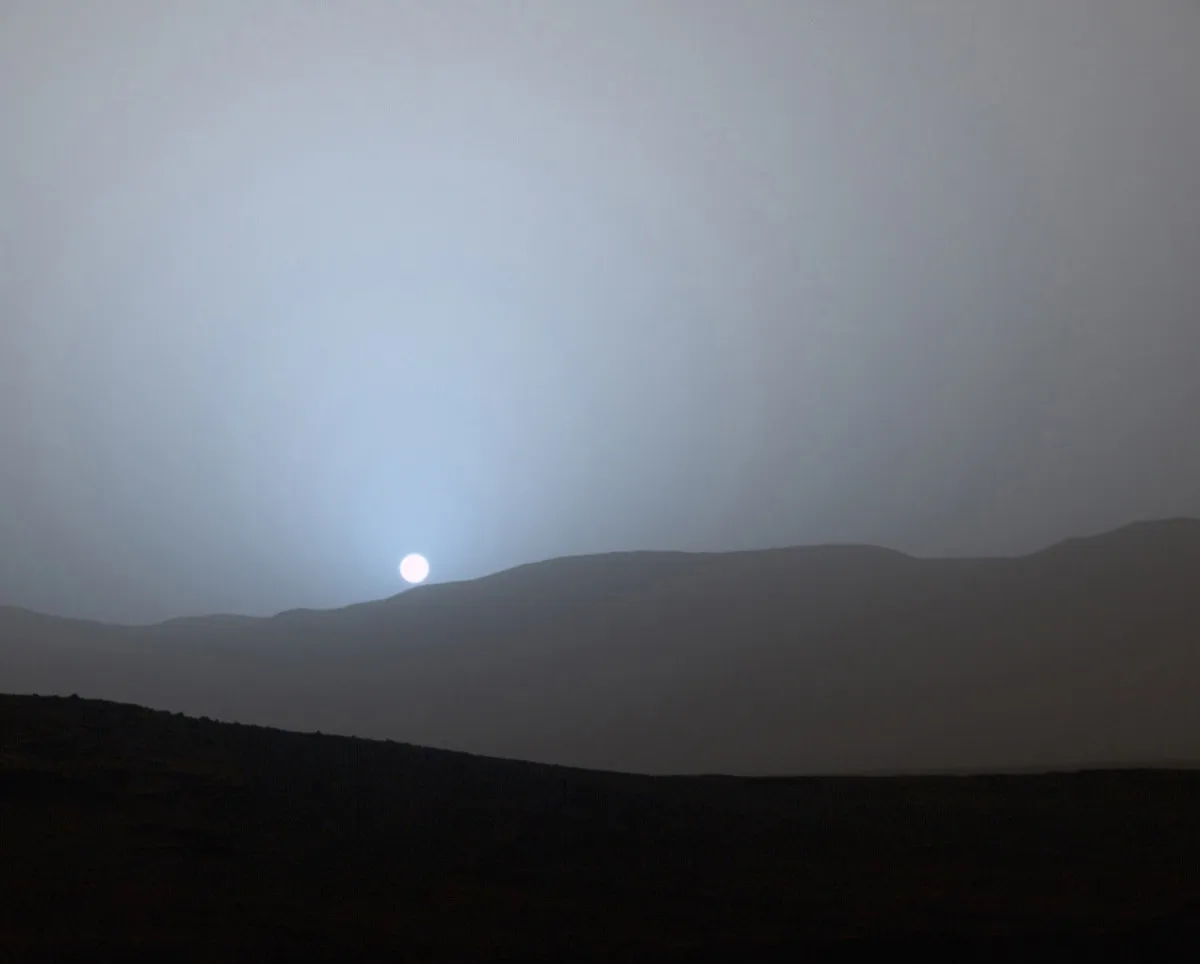
The sunsets we know are typically mellow yellow or fiery pink. But if we lived on Mars, we’d witness blue sunsets, as seen in a series of images snapped by NASA’s Curiosity rover in 2015. As Mark Lemmon, a scientist who worked on the Curiosity team, explained to NASA’s Jet Propulsion Laboratory, “The colors come from the fact that the very fine dust is the right size so that blue light penetrates the atmosphere slightly more efficiently.”
12
There’s a Russian village where every resident is a tightrope walker.

Traversing a highwire may seem like a relatively uncommon ability. However, there’s one Russian community where it’s a perfectly normal thing to be able to do. In Tsovkra-1—a small, secluded village in the southern republic of Dagestan—everyone who’s physically able can walk on a tightrope in a tradition that’s existed for more than 100 years. It’s even taught in school to the village children. Even though only 400 people still live in the region, at least 17 tightrope walkers from the area have found fame in circuses due to their impressive aerial abilities.
13
Domino’s Japan trained reindeer to deliver pizza.
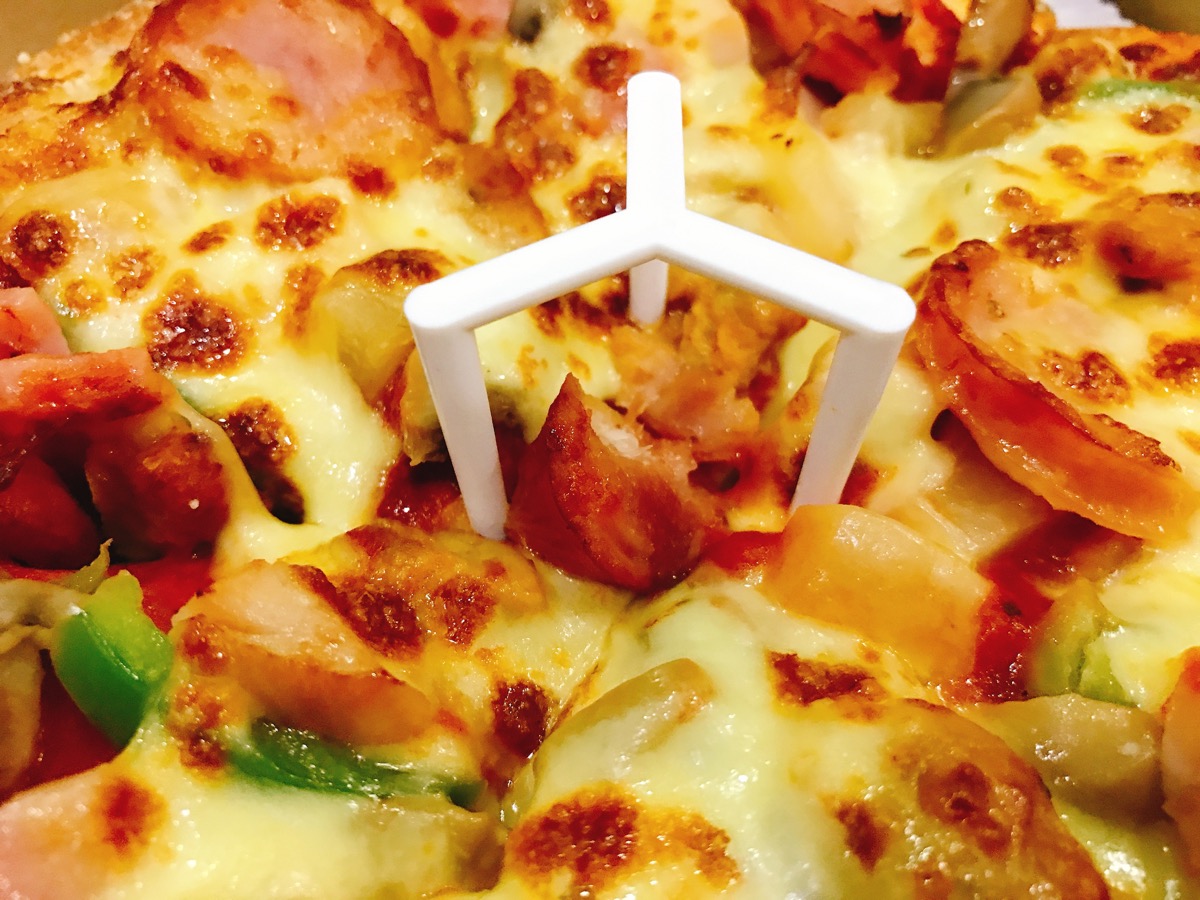
Back in 2016, Domino’s Japan wanted reindeer to do a little more than just pull Santa’s sleigh—they wanted the animals to deliver pizzas to hungry customers. The company released a video of employees tying pizzas to the animals’ backs and said customers would be able to track their pies via GPS.
14
The world record for the tallest stack of doughnuts totaled more than 3,000.
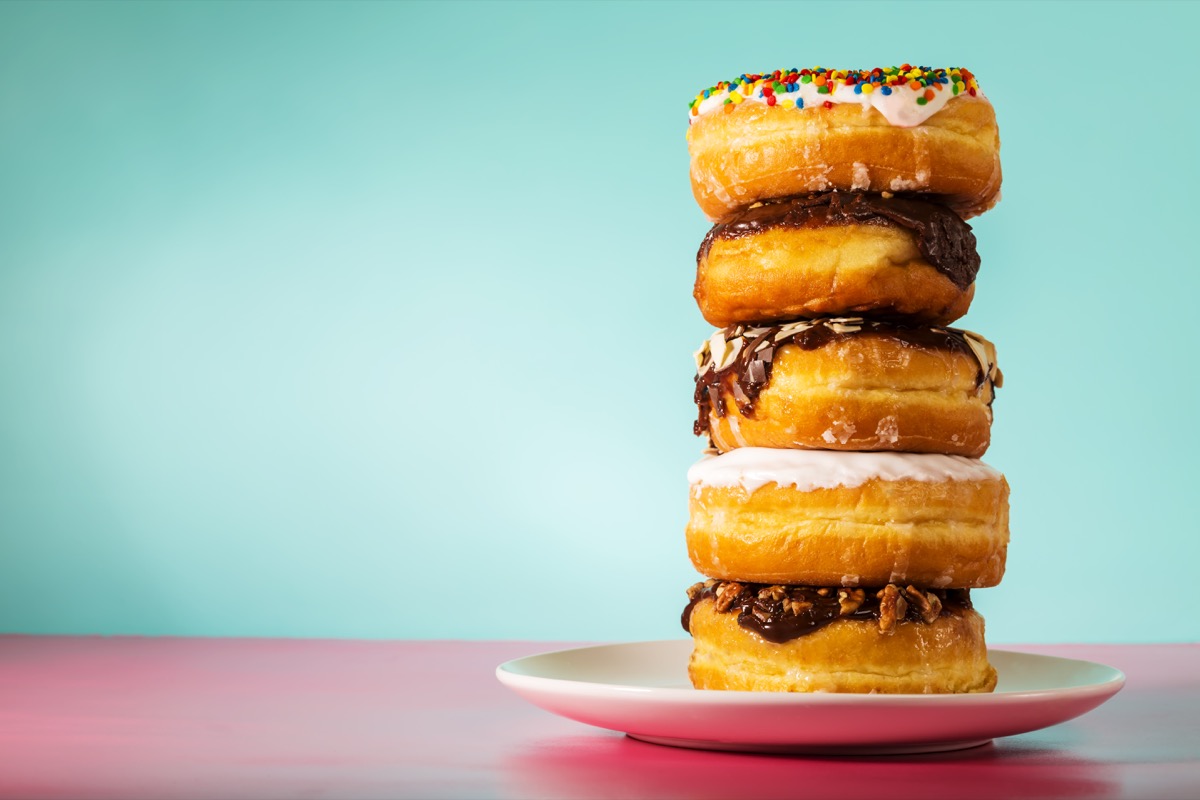
Measuring almost 5-feet tall, the pyramid-shaped tower was made up of 3,100 doughnuts. According to Guinness World Records, the structure was “designed on a number of different software products to ensure its structural integrity.” The organizers behind the project enlisted the help of a structural engineer and an architect, who eventually concluded a pyramid shape would give them “the best combination of stability and height.”
15
Benjamin Franklin was inducted into the International Swimming Hall of Fame.

Benjamin Franklin wasn’t only a skilled writer, politician, and scientist—he was also an avid swimmer. Franklin began swimming as a child in Boston, which led to one of his first inventions: oval palletes worn on the hands so he could swim faster. His enthusiasm for the sport continued throughout his life and was so well-documented that he was eventually given an honorary induction into the International Swimming Hall of Fame.
16
Only two national flags have the color purple on them.
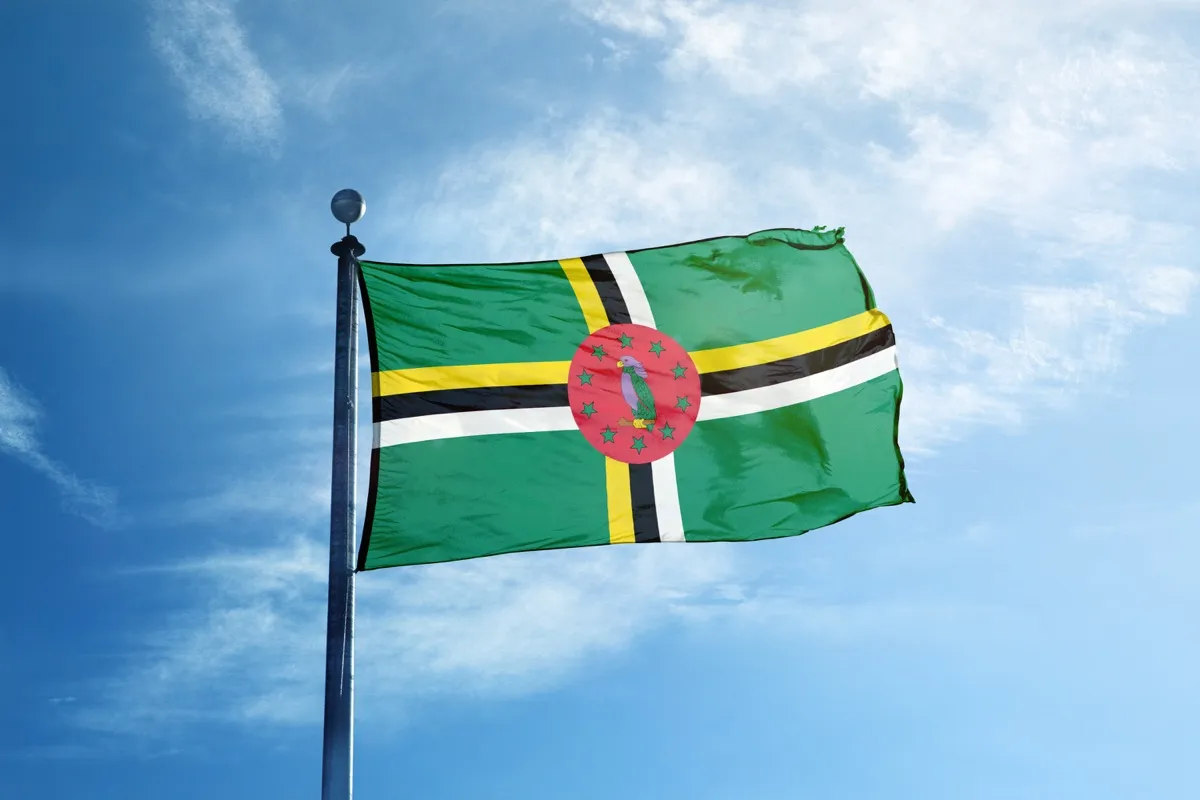
Those two countries are Dominica, which uses purple in its flag’s central image of a sisserou parrot, and Nicaragua, which includes a purple stripe in a rainbow that’s featured on the national coat of arms at the center of the flag.
17
There’s a shrimp-like creature that makes aluminum armor to protect itself.
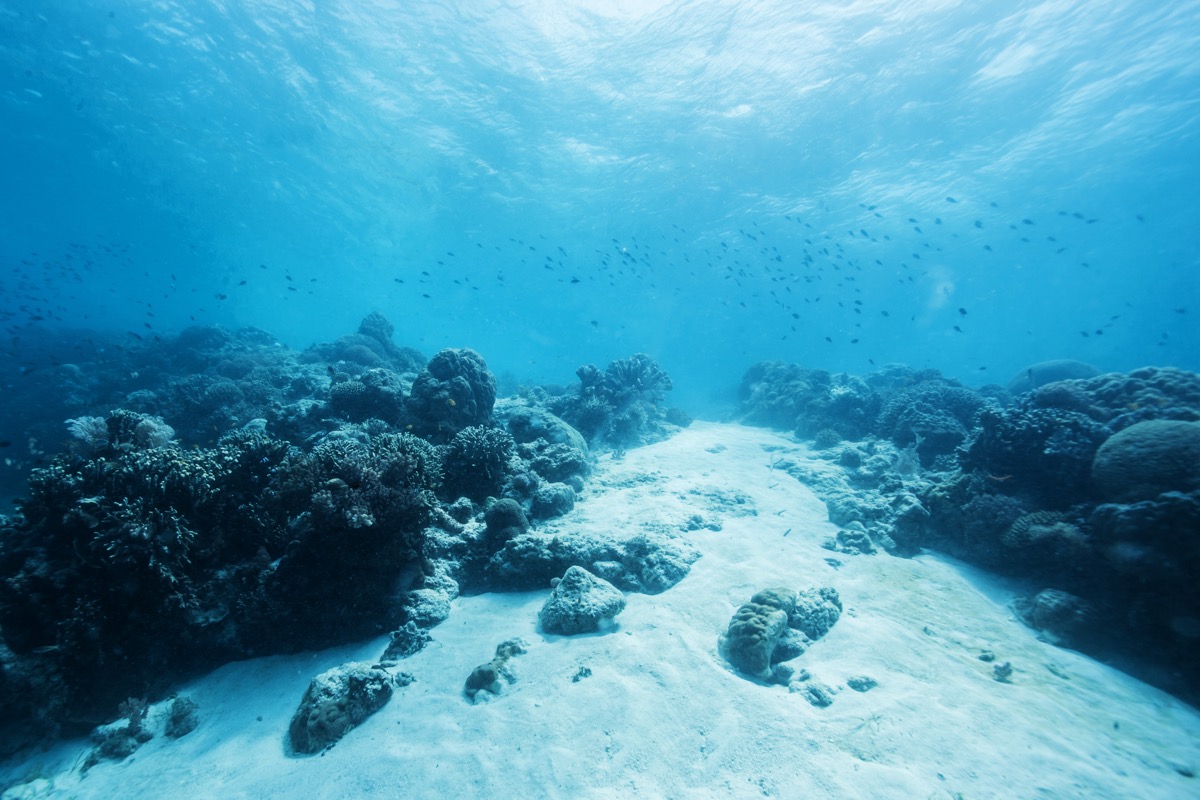
The pressure of the deep sea is so intense that it would crush the bodies of any critter not equipped to withstand it. That’s why Hirondellea gigas—a small, shrimp-like amphipod—adapted to form a layer of aluminum hydroxide gel to cover its exoskeleton, acting as a kind of pressure-resistant armor, according to 2019 research published in the journal PLoS One.
18
Your dog knows when someone isn’t trustworthy.

You may be able to tell when your furry BFF is thrilled to see you, but your dog probably knows even more about you and other people than you do about them. Not only do dogs have innate instincts to protect their humans, but a 2015 study published in the journal Animal Cognition suggests that pups can even tell if a person is untrustworthy based on their behavior.
19
Mount Rushmore cost less than $1 million.

Featuring the faces of former presidents George Washington, Thomas Jefferson, Abraham Lincoln, and Theodore Roosevelt, Mount Rushmore was designed and supervised by sculptor Gutzon Borglum and his son Lincoln Borglum—who took over after his father passed away—between 1927 and 1941. And while the highly recognizable landmark was a sprawling and complex project, it cost just $989,992.32 to erect—adjusted for inflation, that’s about $17 million.
20
The shortest scientific –ology word is “oology.”

Scientists and researchers who work in the field of oology are strictly focused on bird eggs. It is the shortest -ology in science and is a subset of ornithology, the study of birds. And ornithology is a subset of zoology, the study of animals.
21
More than 800 languages are spoken in Papua New Guinea.
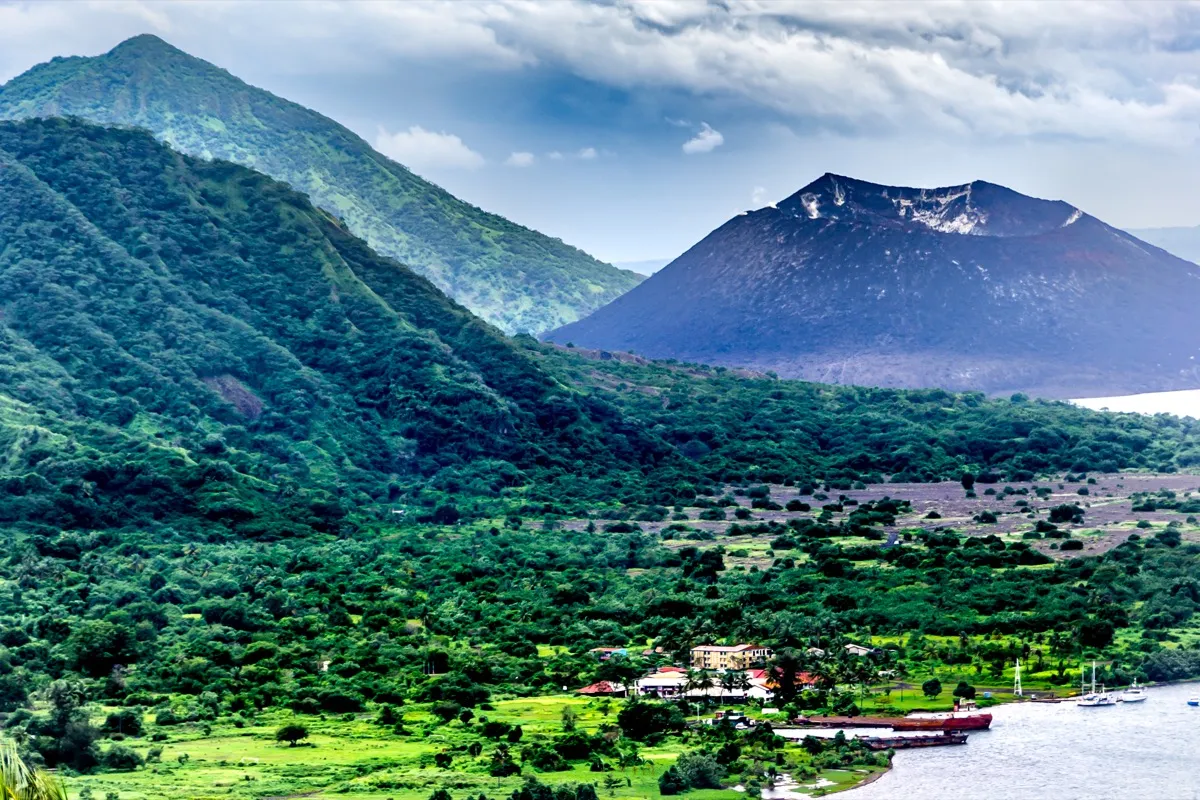
It’s hard to imagine anyone being able to speak—or even understand—all of the 850-plus indigenous languages that are spoken in Papua New Guinea. And in reality, most people don’t. Many of the languages in the country—such as Nihali—are only spoken and understood by a few thousand people in the world. Still, the sheer number of languages that exist in Papua New Guinea make it one of the most linguistically diverse countries in the world.
22
The majority of polar bears live in Canada—not in the Arctic.
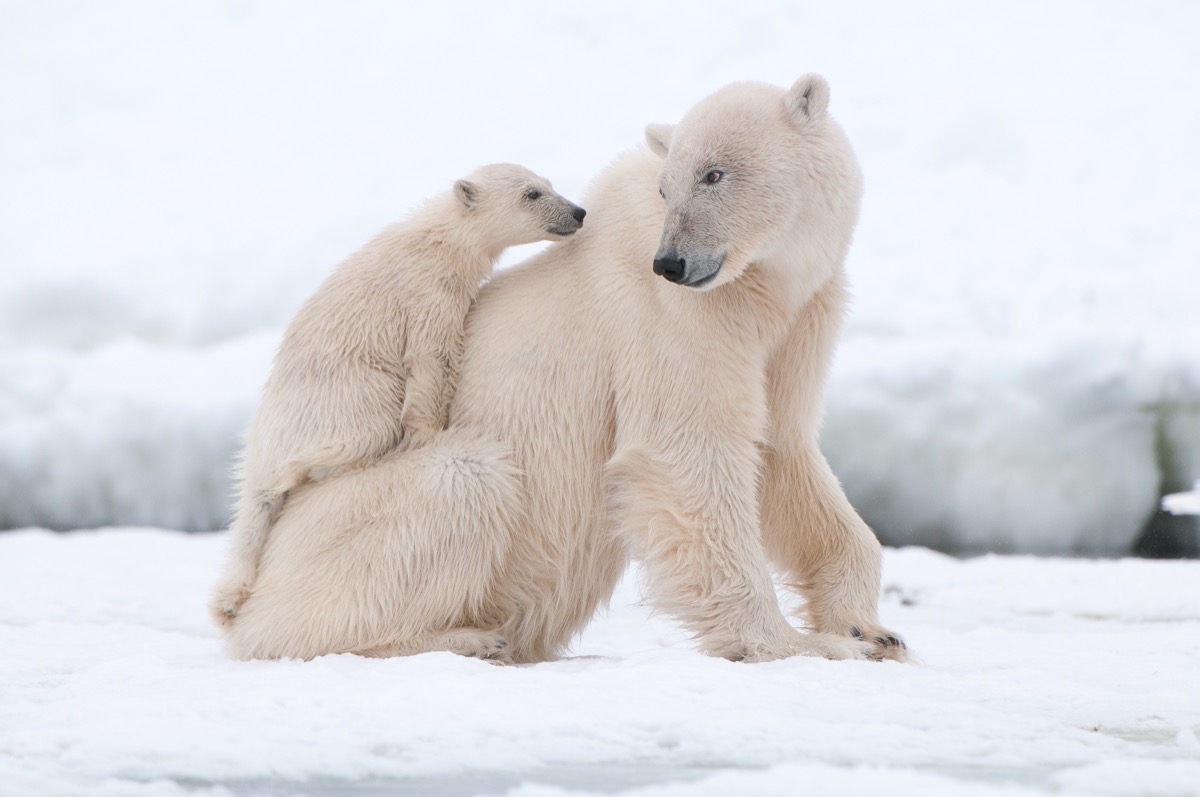
There are an estimated 22,000 to 31,000 polar bears around the world, according to the World Wildlife Fund. And while you can find the beasts in a range of regions in the Arctic circle, including Greenland, Norway, Russia, and Alaska, the majority of them—around 60 to 80 percent—call Canada home.
23
The smallest unit of measurement in the universe is the Planck length.

If you want to find the very smallest things around, you’d need to track down something that’s the size of the Planck length. It’s the smallest possible size of anything in the known universe at a mere 1.6 x10-35 meter across, which is the equivalent of around a millionth of a billionth of a billionth of a billionth of a centimeter (or a decimal point followed by 34 zeroes and a one).
Under the laws of quantum physics, this would be the size of quantum foam, or the tiny wormholes that give space a foam-like structure. If this is beyond you, don’t worry: You’d probably need a very advanced degree to fully understand that concept.
24
The first breakfast cereal had to be soaked overnight before it could be eaten.

It’s probably safe to assume that when you reach for your favorite cereal in the morning, you can simply pour some in a bowl and start eating it. But in order to consume the first manufactured breakfast cereal, which was created in 1863, you had to soak it in milk overnight just to make it edible. The cereal was made of graham flour that had been baked into brittle cakes, then crumbled up and baked again. Not surprisingly, “it was not an immediate success,” according to The New York Times Magazine.
25
The Eiffel Tower was inaugurated the same year Nintendo was founded.

You might assume that Paris’ Eiffel Tower is much older than Nintendo, a company famous for manufacturing popular video game systems. But in reality, the iconic Parisian landmark was inaugurated the very same year that Nintendo was founded: 1889. While the tower was being formally introduced to the public at the World’s Fair, a playing card company that would eventually become Nintendo was being launched in Kyoto by Fusajiro Yamauchi.
26
The world’s largest Barbie collection includes more than 15,000 dolls.
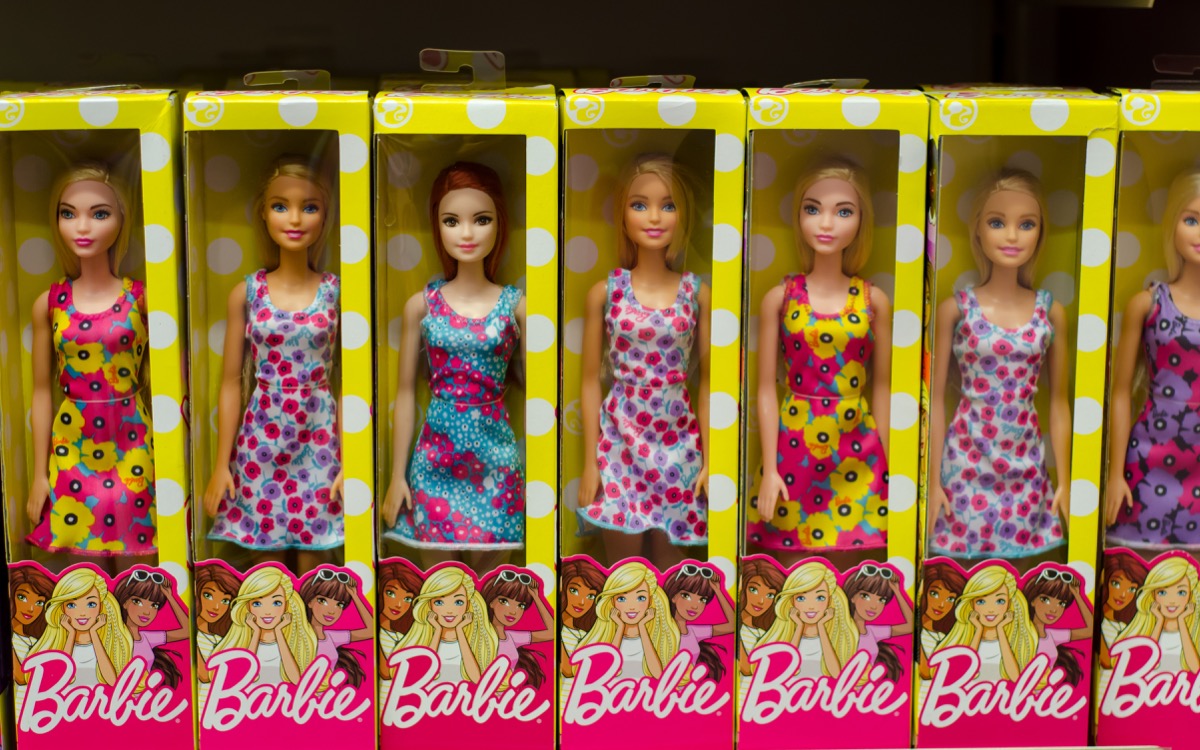
In 1996, Bettina Dorfmann received her first Barbie—a Midge doll, in fact. By 1993, she was collecting them seriously. And in the 26 years since, she’s managed to get her hands on more than 15,000 different versions of the iconic doll, including a rare original Barbie from 1959. In addition to collecting them, Dorfmann also runs a hospital for broken Barbies where she fixes or replaces broken limbs and untangles matted hair.
27
A former NASA scientist invented the Super Soaker.

With the job of NASA engineer on his resume, Lonnie G. Johnson would already be considered an impressive person by anyone’s standards. However, not only did he help develop the U.S. Air Force’s stealth bomber program, according to the Daily Press, but he also invented the Super Soaker water gun in the 1980s.
Inspired while trying to develop an eco-friendly heat pump, Johnson eventually licensed his design to Larami Corporation—later acquired by Hasbro—and the classic squirt gun went on to generate sales that were truly out of this world. He reportedly made so much money from the toy that he was able to fund his own research and development company, which focuses on clean energy.
28
Little brown bats sleep more than any other mammal on earth.
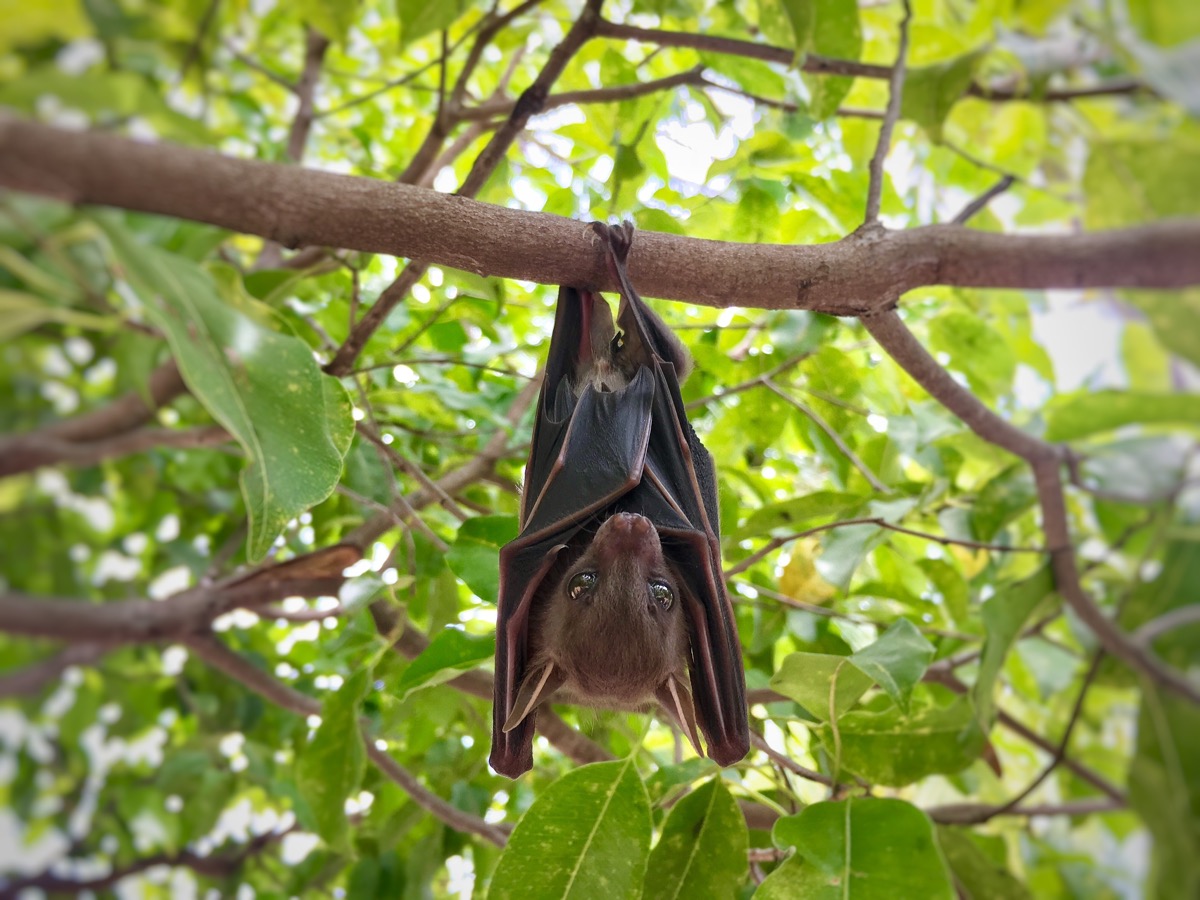
And you thought you were tired. These little guys get so much shuteye that Guinness World Records even deemed the species “the king of nappers.” When observed in captivity, little brown bats have reportedly slept for 19.9 hours straight—that’s more than 80 percent of the day snoozing.
29
A 26-sided shape is known as a small rhombicuboctahedron.

Even if you break it down to rhombi-cubo-octahedron, the word is just about as hard to say as it would be to draw. That’s because a small rhombicuboctahedron is a polyhedron that has eight triangular faces and 18 square faces. Add them all up and you have a snazzy-looking shape with 26 sides.
30
Great white sharks are so scared of killer whales that they’ll avoid an area for up to a year after spotting one.

The majority of humans may be afraid of great white sharks, but that doesn’t mean that the sharp-toothed ocean predators don’t have fears of their own, one of them being another kind of big swimmer: orcas, also known as killer whales. In fact, a 2019 study published in the journal Nature suggests they’re so terrified of the ferocious whales that they’ll avoid an area for up to a year if they encounter one even if it’s just passing by.
As the study’s lead author Salvador Jorgensen explained, “When confronted by orcas, white sharks will immediately vacate their preferred hunting ground and will not return for up to a year, even though the orcas are only passing through.”
31
The longest tennis rally lasted over 12 hours.
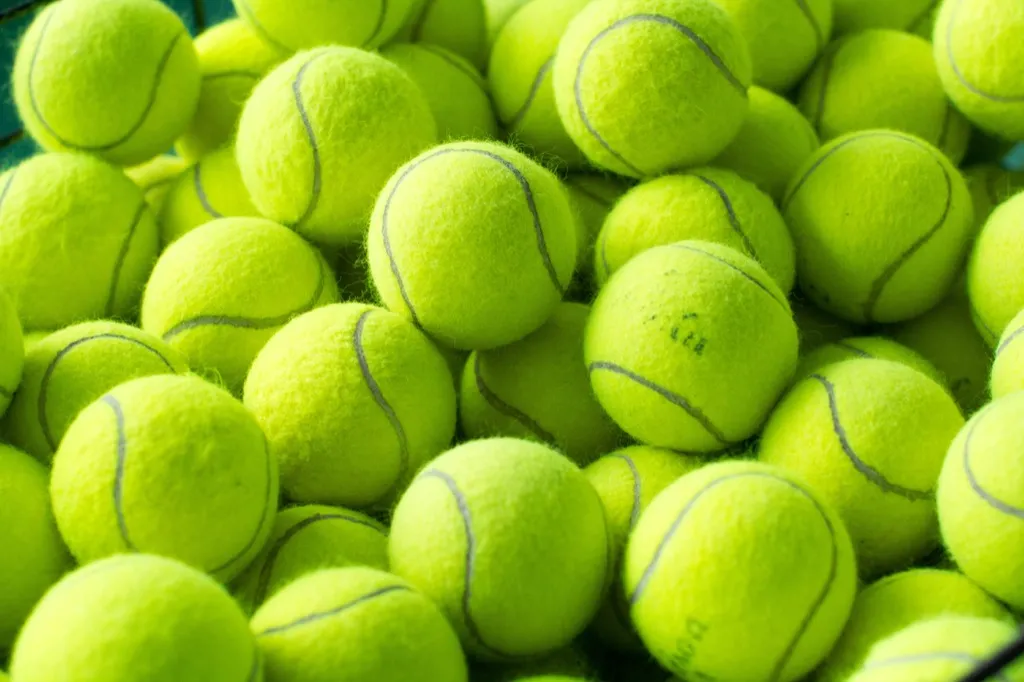
Italian athletes Simone Frediani and Daniele Pecci earned the world record for the longest tennis rally ever on June 11, 2017. Hitting for more than 12 and a half hours straight—from 6:23 a.m. to 7 p.m.—the two took a total of 51,283 uninterrupted strokes, sipping from water-filled backpacks to hydrate without having to stop play. Any good tennis player will tell you that consistency is crucial, and we’re pretty sure these two have that part of the game down pretty darn well.
32
The first pieces of gold at Fort Knox arrived by mail.

Over the years, Fort Knox has definitely lived up to its reputation of being an impregnable facility. However, the very first gold that arrived at the bullion depository in 1937 wasn’t particularly well-protected. In fact, according to the United States Mint, “The gold was too heavy to fly in, so it was mailed there by train through the Post Office Department, today’s United States Postal Service.”
33
Honey is essentially bee vomit.
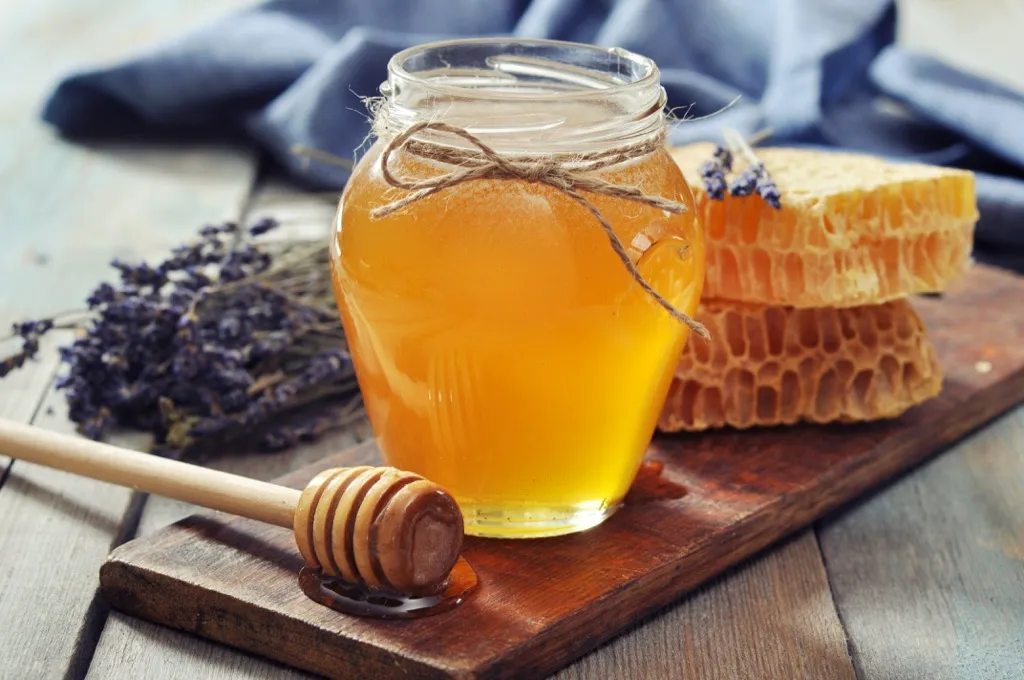
When a bee takes nectar from a flower, the tiny creature stores it in its “crop,” an enlargement at the back of its esophagus, where the nectar mixes with enzymes. “A nectar-foraging bee returns to the hive and pumps out the nectar to a receiving bee,” says now retired extension apiculturist Eric Mussen of the University of California, Davis.
After being mixed with enzymes, “the nectar is passed to processing bees that blend the incoming nectar loads, mix them together, then pump out a bit of solution,” he says. After some of the liquid in the solution evaporates, it’s once again taken into a bee’s crop and further mixed before it’s finally deposited into a comb where it will become the honey you know and love—or at least used to love.
34
There’s a word for tapping someone on the opposite shoulder from behind to fool them.

If you’ve ever tapped someone on the opposite shoulder in order to attempt to trick them, then you’ve done what people living in Indonesia would call “mencolek.” But no matter what you call this, it will still probably make the person on the receiving end of the gesture groan in response.
35
Beavers have transparent eyelids so they can see underwater.
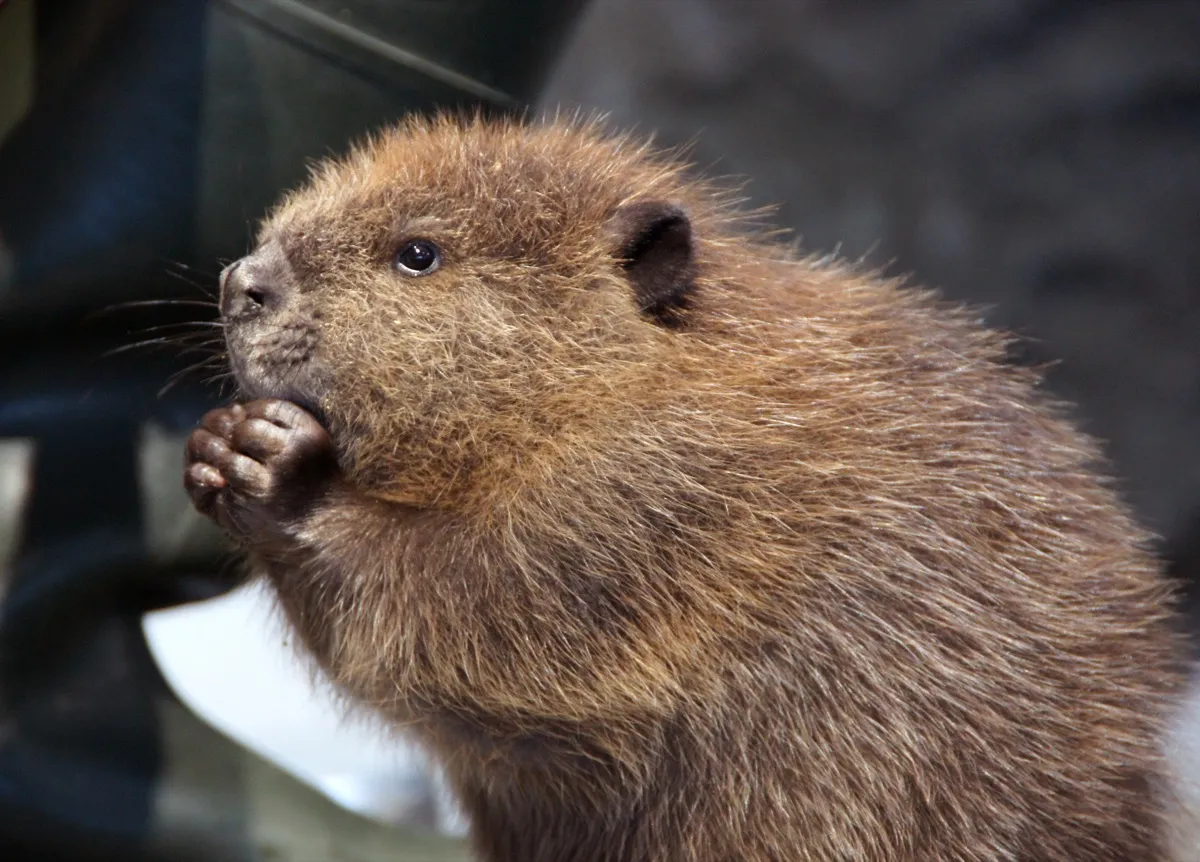
Beavers have plenty of amazing features that help them thrive, including webbed feet and a powerful tail. But the large rodents also have transparent eyelids so that they can shut their eyes and still see underwater.
36
There’s a “floating rainforest” in the sea.
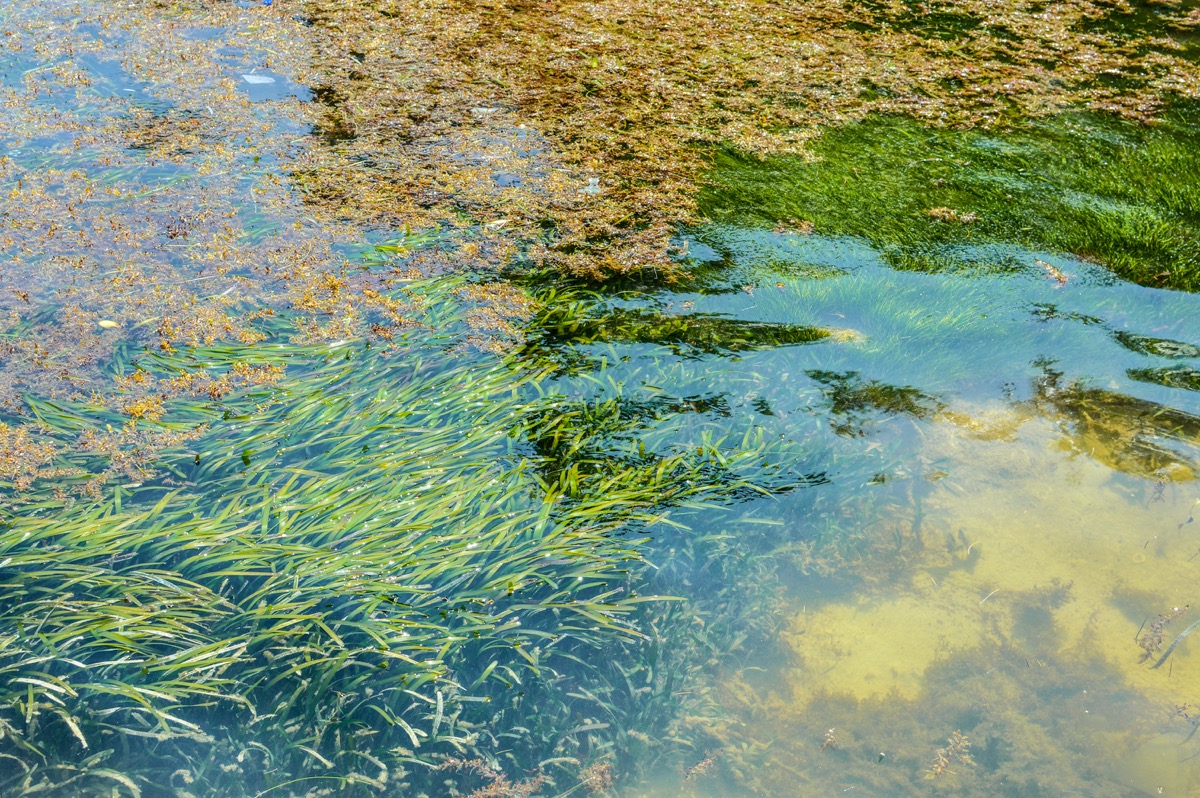
When most people think of rainforests, they picture massive jungles filled with trees and critters. However, somewhere in the Sargasso Sea sits the so-called “floating rainforest” that consists not of dense vegetation on land, but of seaweed under water.
According to Smithsonian magazine, each strand of brown Sargassum marine algae can grow to be the length of a school bus. When they become matted together in the water, the masses—or “forests”—of algae can be as large as several football fields. The seaweed is not only impressively long and large, but also provides the perfect place for a diverse collection of animals to live—not unlike an actual rainforest!
37
Arkansas hosts the annual World Championship Duck Calling Contest.
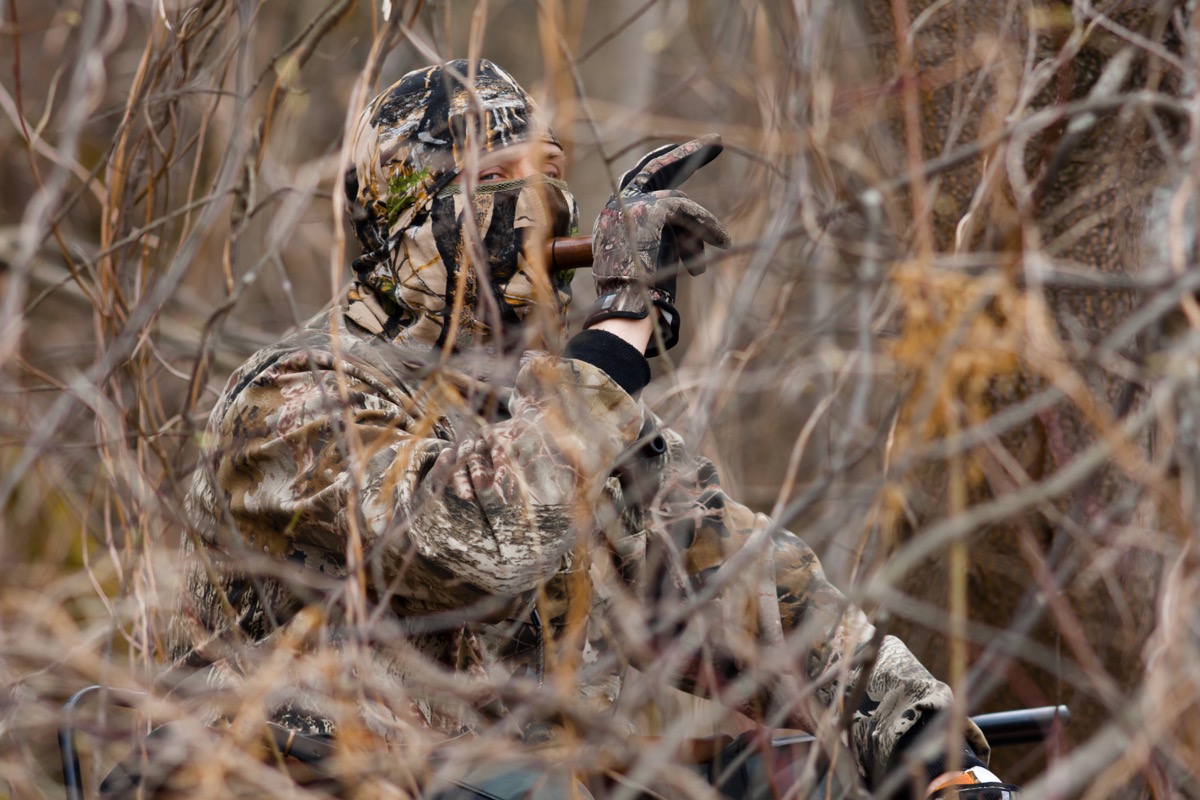
If you’re skilled at quacking like a duck, then you should consider heading to Stuttgart, Arkansas. That’s where the Annual World Championship Duck Calling Contest is held. Founded in 1936 and taking place every Thanksgiving week, contestants must first win a sanctioned preliminary state or regional duck-calling contest before being able to compete in the main event. The winner takes home a prize package worth more than $15,000.
38
There’s such a thing as a fear of buttons.

Those who suffer from koumpounophobia will do their best to avoid anything and everything to do with buttons—looking at them, touching them, wearing clothing affixed with them, even thinking about them. If you suffer from this affliction, you’re repulsed by buttons of every shape, size, color, and material. Anecdotal evidence, according to The Guardian, suggests that one in every 75,000 people lives with this phobia. But only one case study (from 2002) has ever been done.
39
The first TV commercial didn’t air until the 1940s.
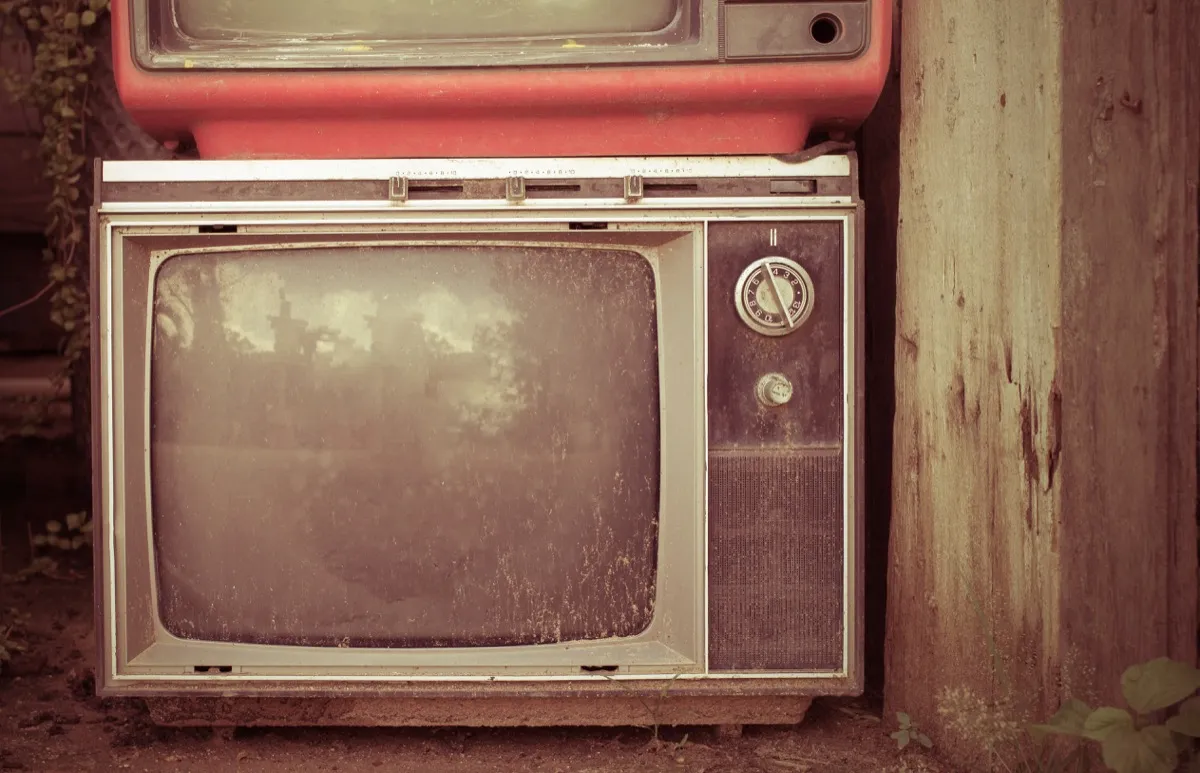
On July 1, 1941, the L.A. Dodgers were playing the Philadelphia Phillies in New York at Ebbets Field. And while the game was surely exciting on its own, those who were watching at home on the NBC-owned WNBT—now WNBC—also saw another exciting historical moment: the very first TV commercial shown in the United States.
As reported by WJCT News, the ad cost just $9 and was disarmingly simple: Over a silhouette of the continental United States, a watch face pops up, and a voiceover says, “America runs on Bulova time.” Today, of course, America runs on Dunkin’.
40
Singapore plans to build floating burbs.

With a fast-growing population of nearly 6 million people, all of whom must cram on a mere 719 square kilometers—or about 447 square miles—of land, Singapore needs more space than ever. And, according to a report in Hakai magazine, they’re working on plans to create that space on 40 floating rafts.
The each individual section would be about the size of a baseball diamond, weigh more than 7.5 metric tons, and be tethered to the seabed about 18 meters below.
41
The stars and flashes of light you see when you rub your eyes are called “phosphenes.”

Rubbing your eyes a little too hard might leave you seeing stars—which are actually phosphenes, according to Troy Bedinghaus, OD, of Verywell Health. “The optic nerve translates this pressure into various images,” Bedinghaus says. “Pressure phosphenes can remain for a few seconds after the rubbing stops and the eyes are opened, allowing the phosphenes to be seen.”
42
There is a fish with transparent bones and white blood.
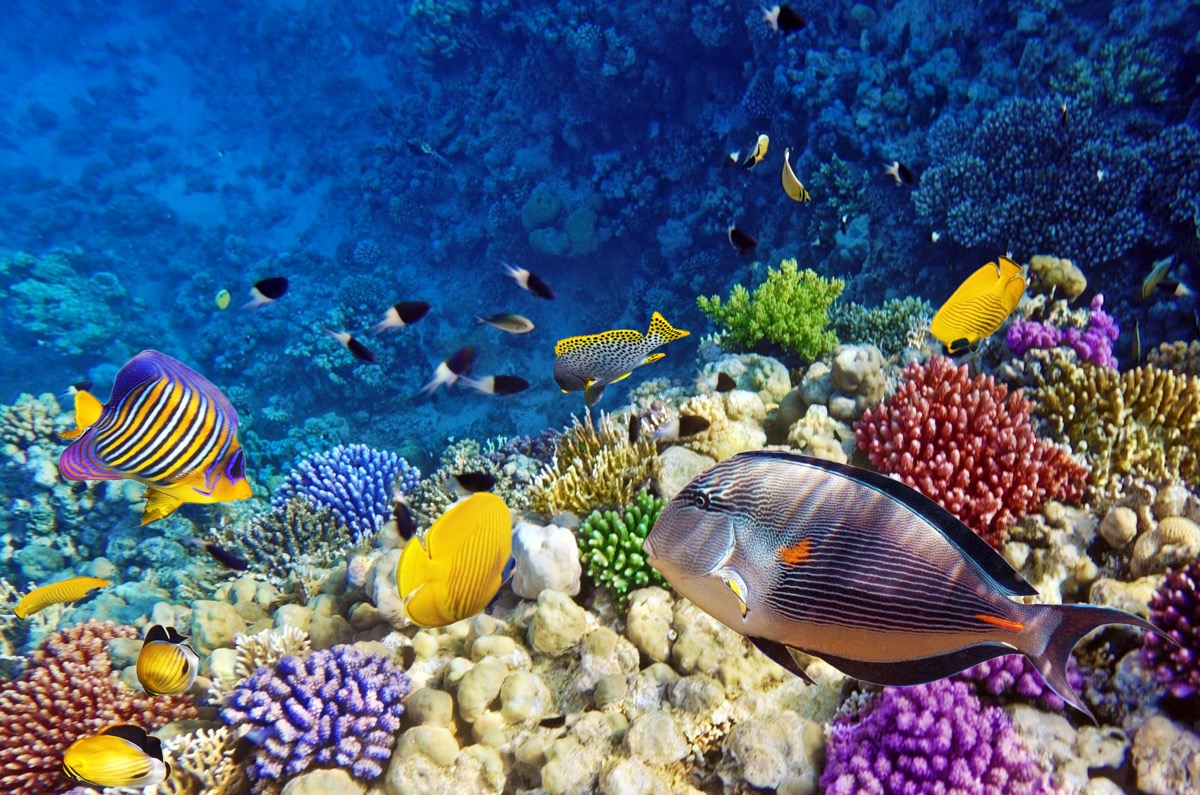
There are some pretty extraordinary creatures living down in the deep sea. Take, for instance, the Antarctic blackfin icefish. Not only does this creature lack scales and have transparent bones, but it’s also unique in that it doesn’t have red blood cells or hemoglobin pigments for transporting oxygen, causing the fish to have a very unique characteristic: white blood.
43
Tarantula bites are about as painful as bee stings.
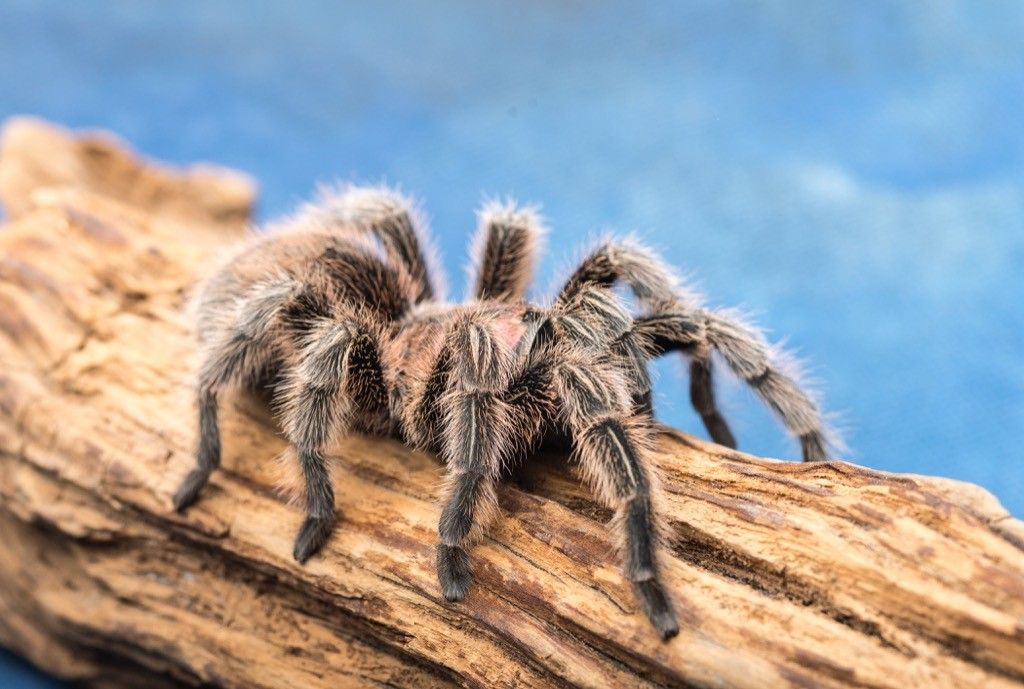
Despite their incredibly scary reputation, it turns out that tarantulas have a bite that is about as painful and as venomous as a bee sting. And according to Burke Museum, “None of the North American species or those commonly kept as pets are considered to pose even a mild bite hazard.”
In fact, the museum’s website says, “Hollywood is squarely to blame for these spiders’ toxic-to-humans reputation. Tarantulas are large, photogenic and many are easily handled, and therefore they have been very widely used in horror and action-adventure movies.”
44
Tree seeds were taken into orbit and planted as “Moon Trees.”
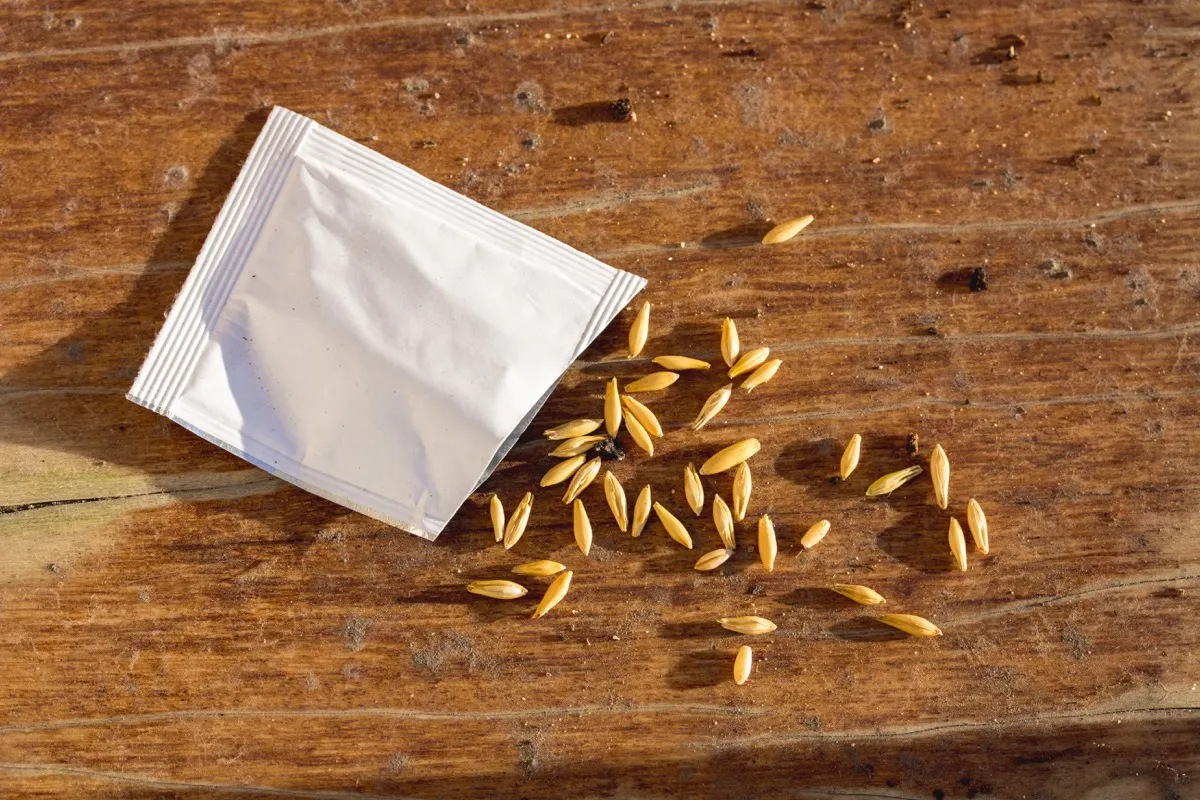
When astronaut Stuart Roosa, a former U.S. Forest Service smoke jumper, orbited above the moon during the Apollo 14 mission in 1971, he brought with him hundreds of seeds from five different kinds of trees: loblolly pine, sycamore, sweetgum, redwood, and Douglas fir.
When he returned to Earth, the seeds were planted throughout the U.S. and around the world in order to grow into what were affectionately deemed “Moon Trees.” If you’re interested in seeing one in person, you can find a list of the trees as well as their locations on NASA’s website.
45
A cow-bison hybrid is called a “beefalo.”
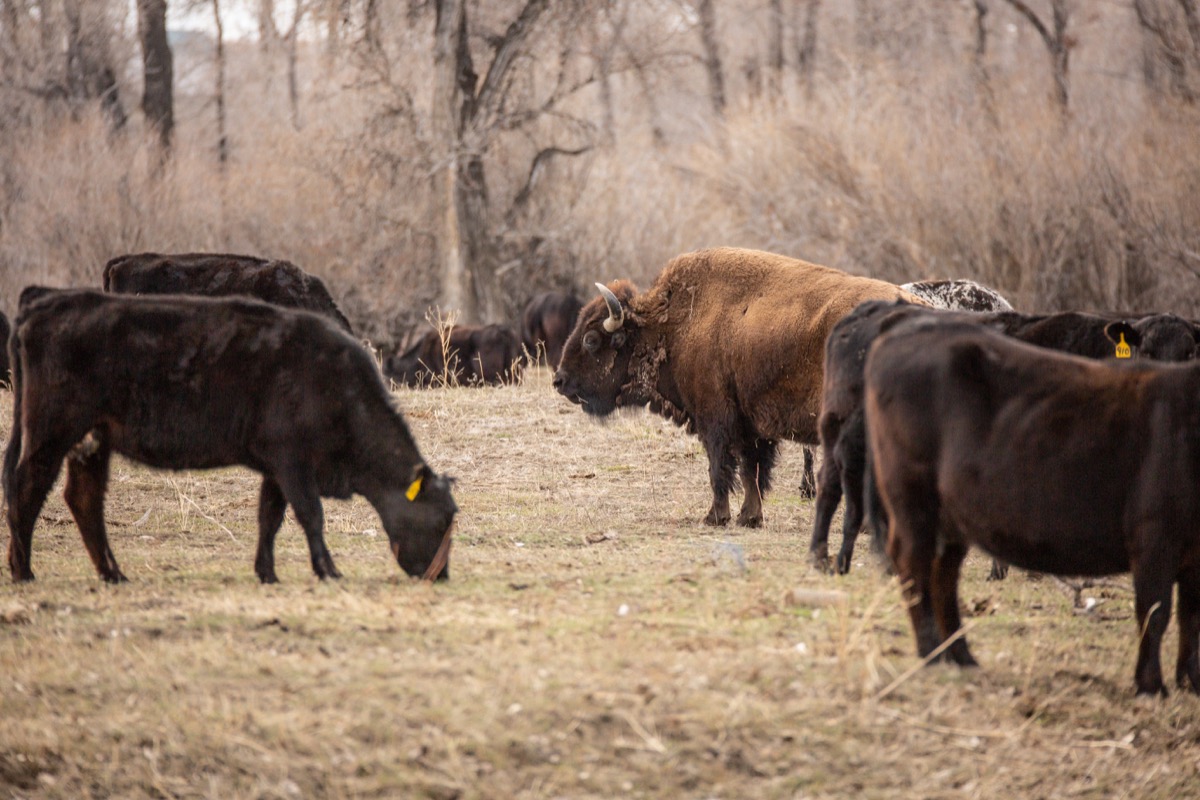
Cows and bison may not be the most common mates in the animal kingdom, but as a result of a failed crossbreeding experiment, the “beefalo” was born. And, according to the BBC, the hybrid beast caused trouble in the Grand Canyon, depleting the area’s watering wholes and food sources.
46
Pittsburgh is the only city where all three major sports teams share the same colors.

Black and gold are beloved colors in Pittsburgh, especially for sports fans who proudly wear them whether they’re rooting for the Steelers (NFL), the Penguins (NHL), or the Pirates (MLB). According to The Witchita Eagle, the inspiration for the choice of color is “pretty simple—they are the colors of Pittsburgh’s flag, which is based on the coat of arms of William Pitt, the 18th century British prime minister for whom the city is named.”
47
A chameleon’s tongue is twice as long as its body.
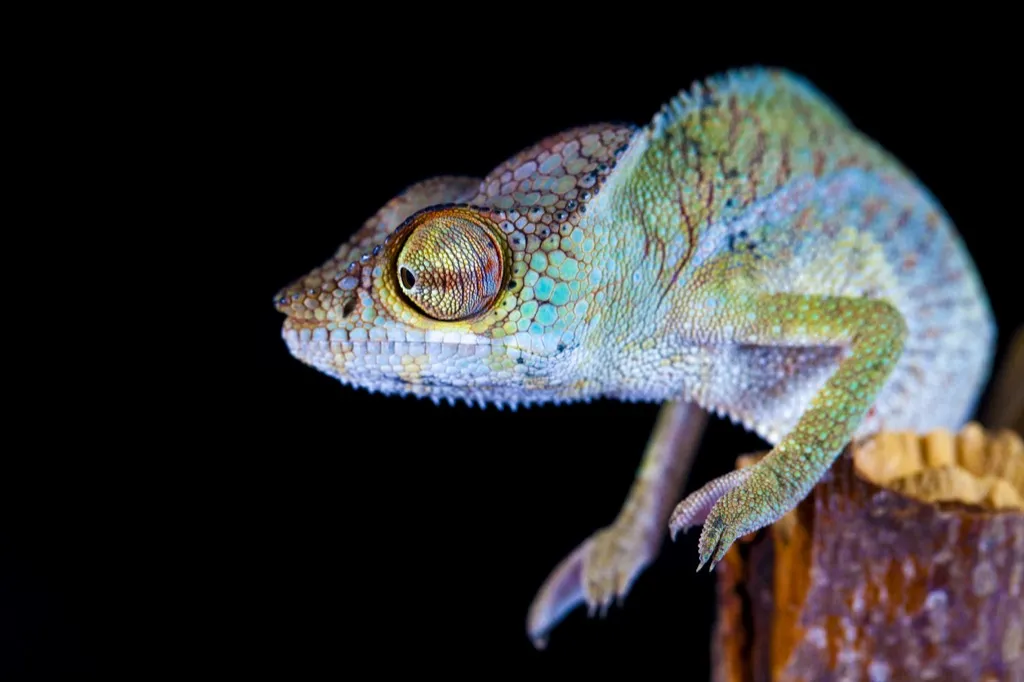
According to National Geographic, the sticky tongues of chameleons are roughly twice the length of their bodies—for humans, that would be like having a tongue that measured 10 to 12 feet long. In addition, the color-changing lizard has one of the fastest tongues in the animal kingdom. Quite the combo!
48
Hippos have the largest mouths of any animal on land.
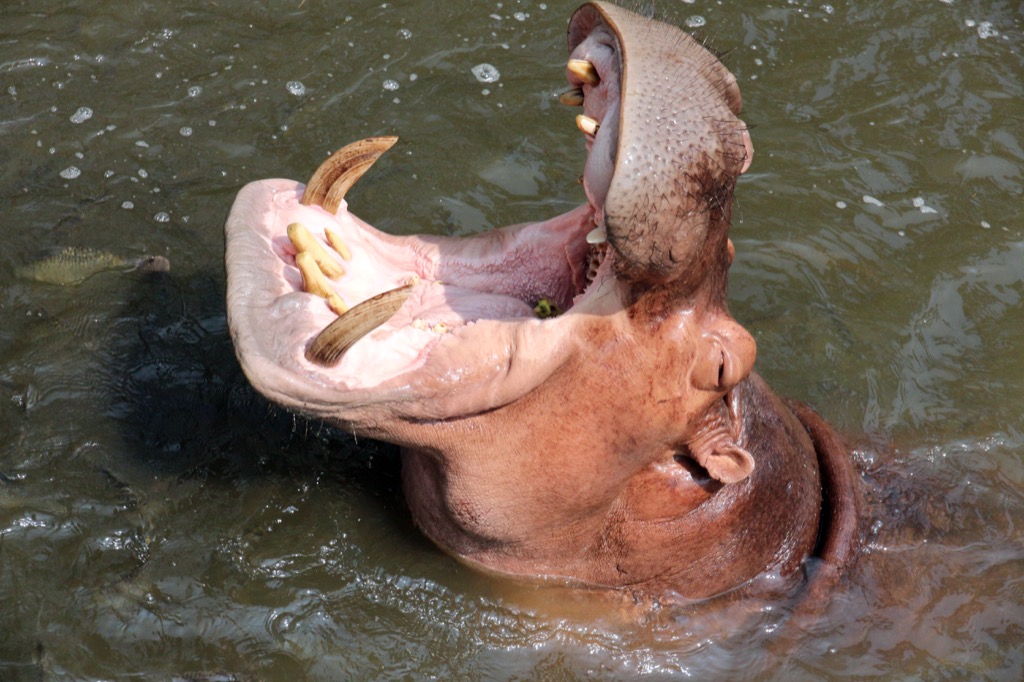
Hippos might seem like jovial creatures, but you don’t want to mess with them. According to Guinness World Records, the African animal can open its jaws almost a full 180 degrees—making for an average gape of about four feet. And oh yeah, their teeth typically measure over two feet long. Yikes!
49
Goats have accents.

In 2012, according to NPR, researchers from Queen Mary’s School of Biological and Chemical Sciences at the University of London studied baby goats from when they were just starting to socialize and found that the little animals eventually began to sound like each other, i.e. they had accents. Scientists believe that the accents help the animals determine whether another goat is from their same area or from some place unfamiliar to them.
50
The world’s largest falafel weighed 223 pounds.

Falafel fans might find it hard to believe that there could ever be too much of the deep-fried deliciousness, but even they might find themselves overwhelmed by the world’s largest falafel, which was served up on May 31, 2019 at a resort on the Dead Sea in Jordan. How big was it? Oh, just a mere 223 pounds.
51
Lightning can heat the air it passes through to 50,000 degrees.
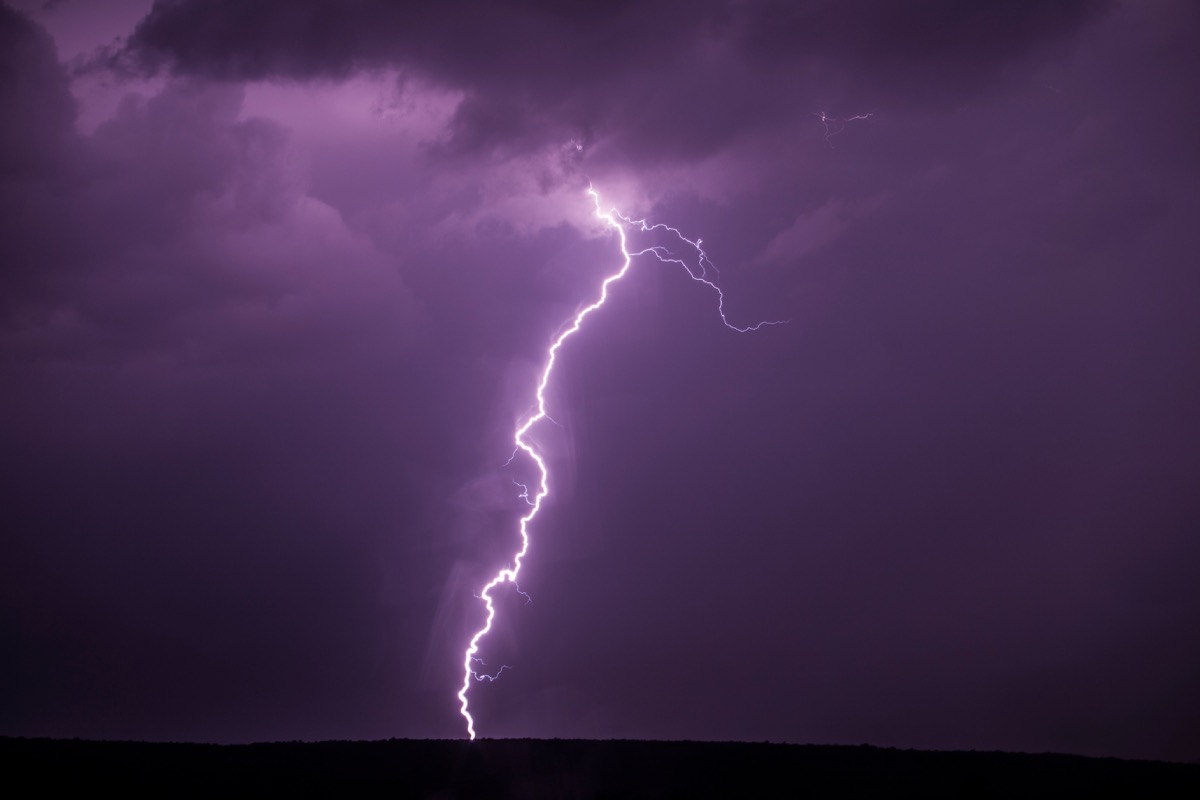
In addition to electricity, lightning generates an unbelievable amount of heat. In fact, according to the National Weather Service, lightning can heat the air it passes through to a sizzling 50,000 degrees Fahrenheit, which is five times hotter than the fiery surface of the sun.
52
If you heat up a magnet, it will lose its magnetism.
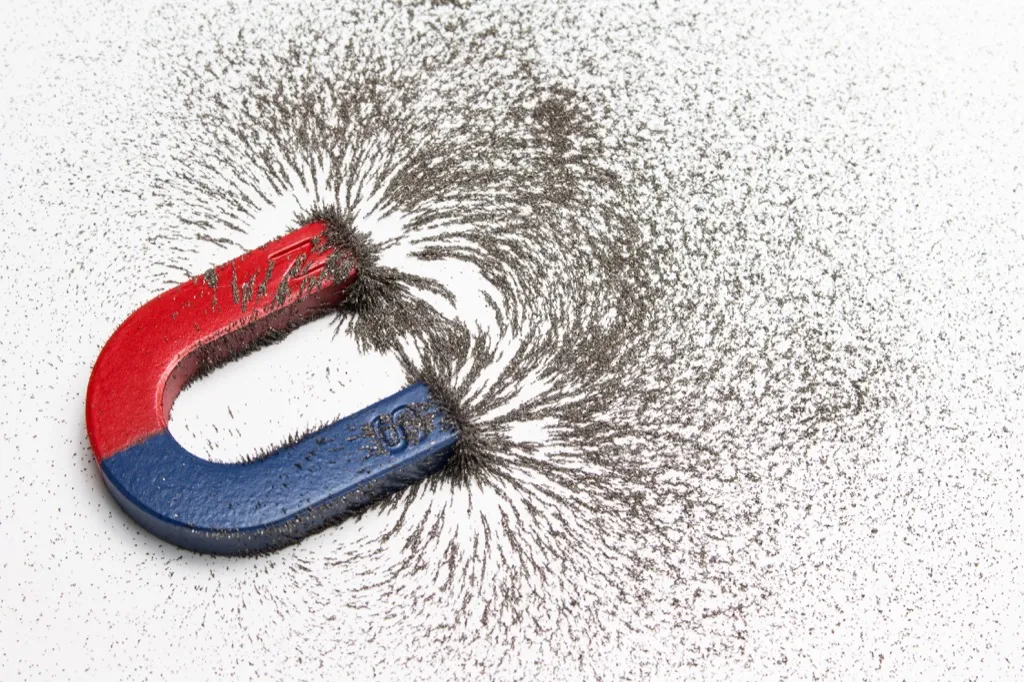
The right magnets can exert a force powerful enough to crush bone. However, all it takes is a little heat to render them useless. While cold makes magnets stronger, extreme temperatures can significantly reduce their magnetism, according to Sciencing.
53
A relative of the T. rex stood just 3-feet tall.
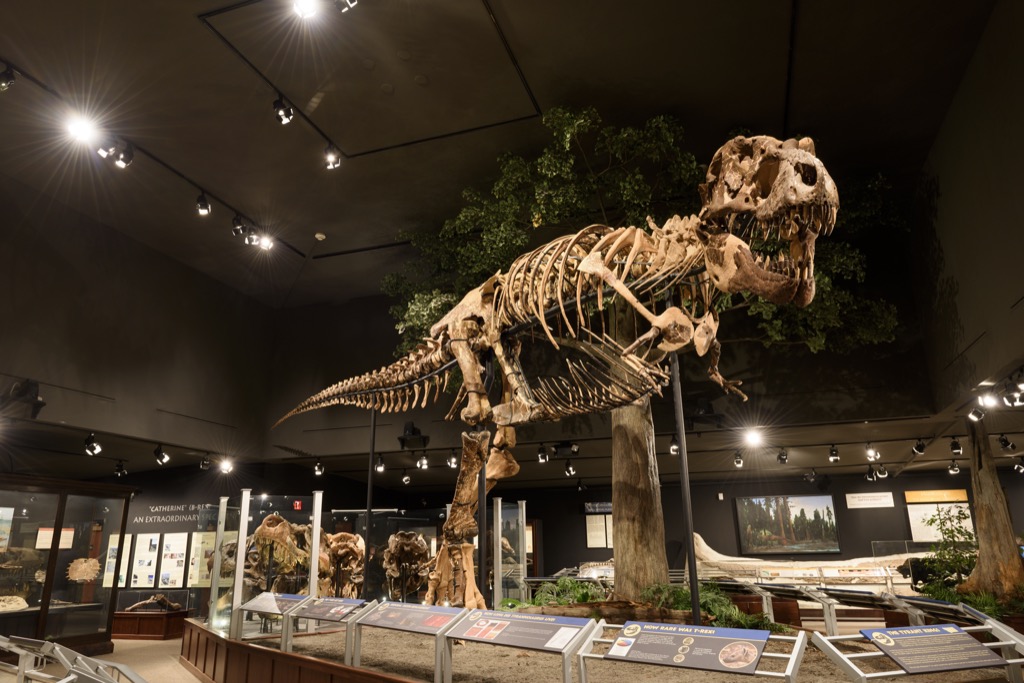
The Tyrannosaurus rex is known as one of the largest, most ferocious species of dinosaur to ever have existed—which was more than 60 million years ago. However, an early T. rex relative, Suskityrannus hazelae, lived around 92 million years ago and stood at a modest height of three feet and only weighed between 45 and 90 pounds, according to Smithsonian magazine.
54
Your brain is sometimes more active when you’re asleep than when you’re awake.

Even when you fall into a deep sleep, the activity inside your head is still buzzing in order to keep your body running while processing your subconscious thoughts—so much so, says National Geographic, that your brain is at times more active while you’re sleeping than it is when you’re awake.
55
England is hit with more tornadoes per square mile than any other country in the world.
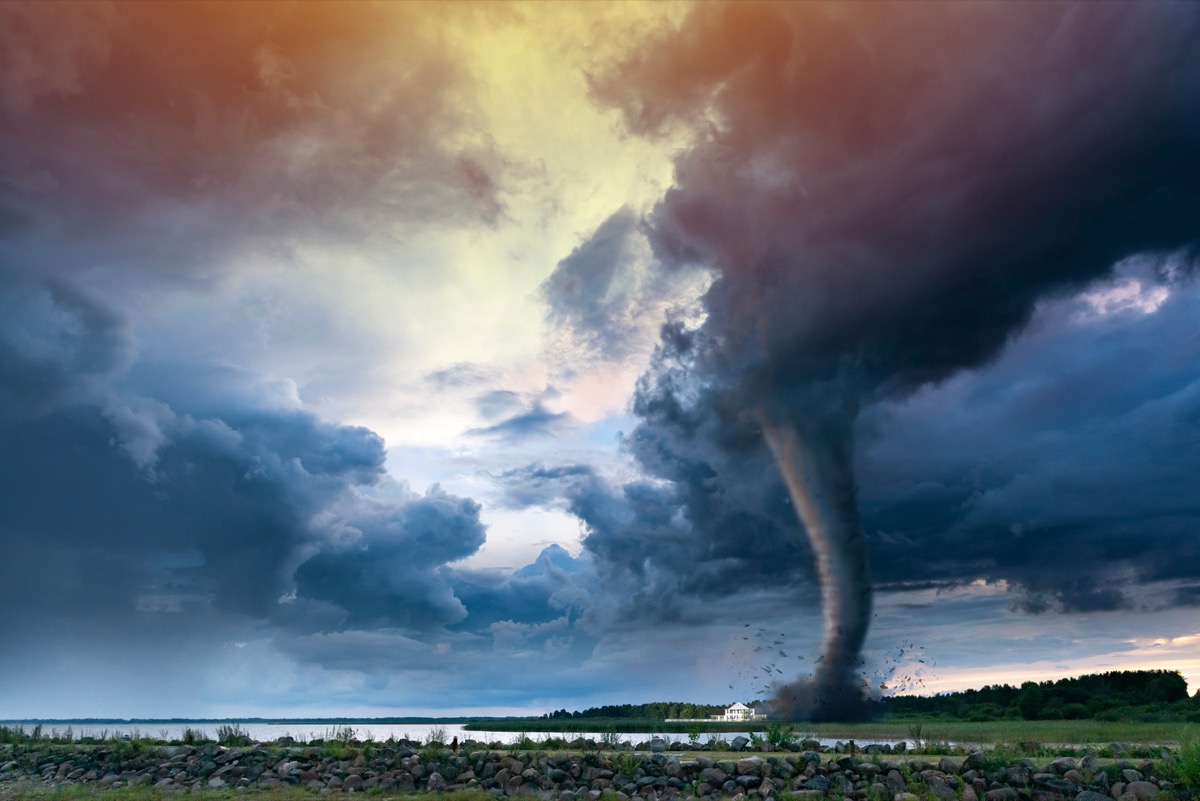
America definitely experiences its fair share of dangerously blustery weather, but England is considered to be the tornado capital of the world. The country, on average, gets hit with 34 tornadoes each year, which is about 2.2 every 3,861 square miles. The U.S., on the other hand, experiences about 1.2 every 2,970 square miles.
56
The word “kimono” means “a thing to wear.”

If you translate the garment’s name from its Japanese roots—ki means “wear” and mono means “thing”—the word literally means “a thing to wear.”
57
The world’s oldest operating library is in Morocco.

Dating back to 859 A.D., the Al-Qarawiyyin Library in Fez, Morocco, had long been off limits to visitors who weren’t the select few researchers and academics that had been granted access. However, in 2016, the world’s oldest library, which houses a 9th century version of the Quran, finally opened its doors to anyone wishing to explore its ancient texts.
58
The patient in the game Operation has a name.
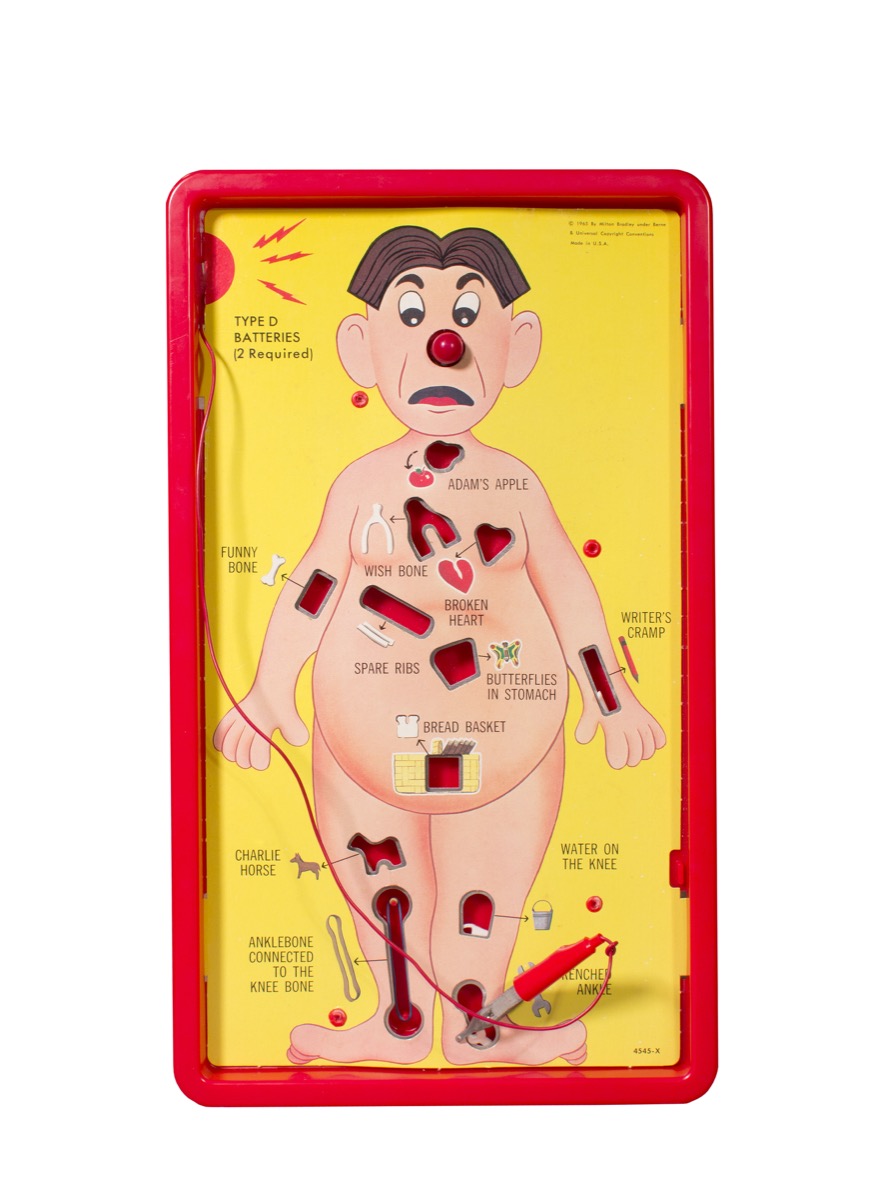
Now you’ll be able to tell everyone that the incision-filled patient you are about to perform surgery on goes by the name Cavity Sam.
59
The space between your eyebrows is called the glabella.

You know that space between your eyebrows that requires a good plucking from time to time? Of course you do. But do you know what it’s called? Well, that’s your glabella, of course.
60
Shakespeare’s plays feature the word “love” about 10 times more than the word “hate.”

Of course, William Shakespeare wrote about both love and hate. However, he focused much more on the former than on the latter. In his plays alone, he used the word “love” 1,640 times and the word “hate” 163 times. And when it comes to Shakespeare’s complete works, “love” appears a total of 2,209 times, according to Open Source Shakespeare.
61
There was a flying dinosaur the size of a giraffe.

The pterosaurs—comparable in size to your average giraffe—had a wingspan of 35 feet and could fly for thousands of miles, according to National Geographic. “Instead of taking off with their legs alone, like birds, pterosaurs probably took off using all four of their limbs,” paleontologist Michael Habib told The Telegraph. He says that using their strong arms as “the main engines for launching instead of their legs may explain how pterosaurs became so much larger than any other flying animals known.”
62
There’s an asteroid that’s worth $95.8 trillion.
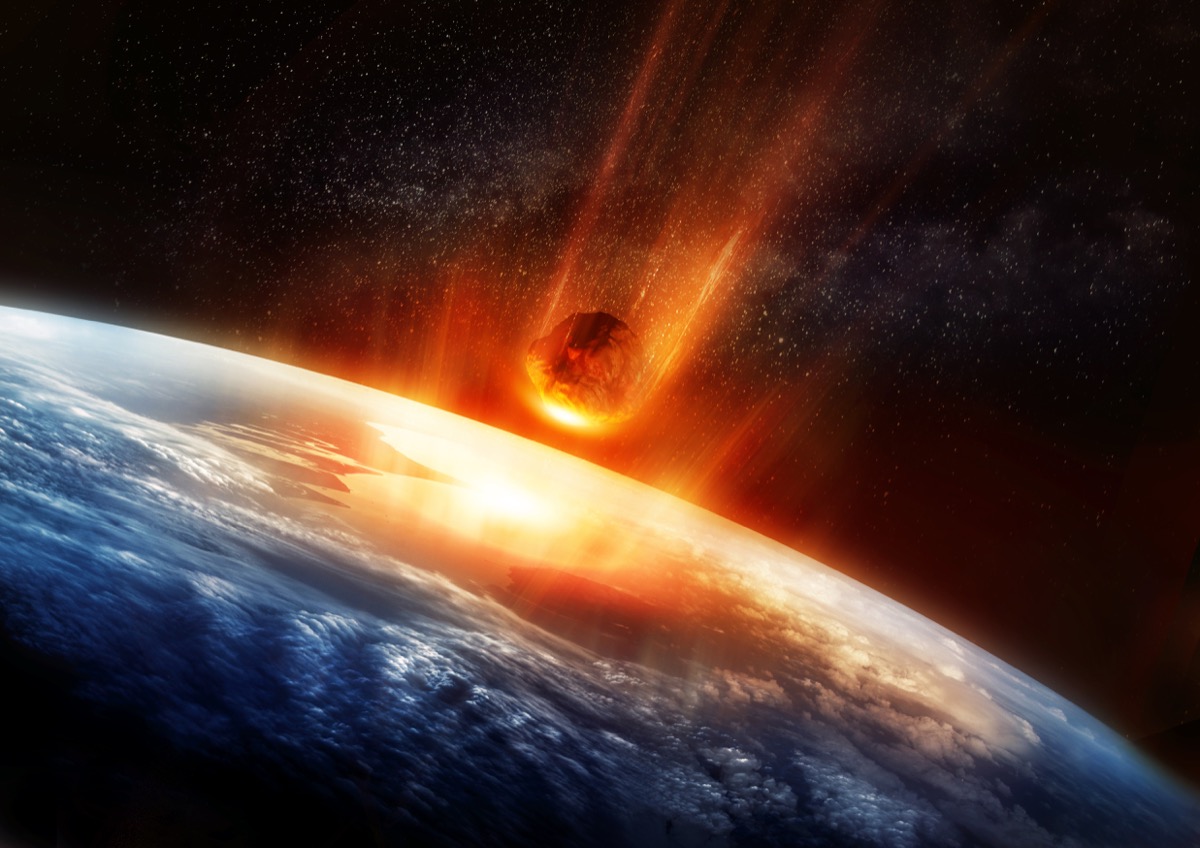
Way up in space, there’s an asteroid by the name of 241 Germania that’s 100-miles wide and holds a heck of a lot of minerals. On Earth, those minerals, including hydrocarbons such as oil, would be worth around $95.8 trillion.
63
Donkeys and dolphins are sometimes used as guard animals.
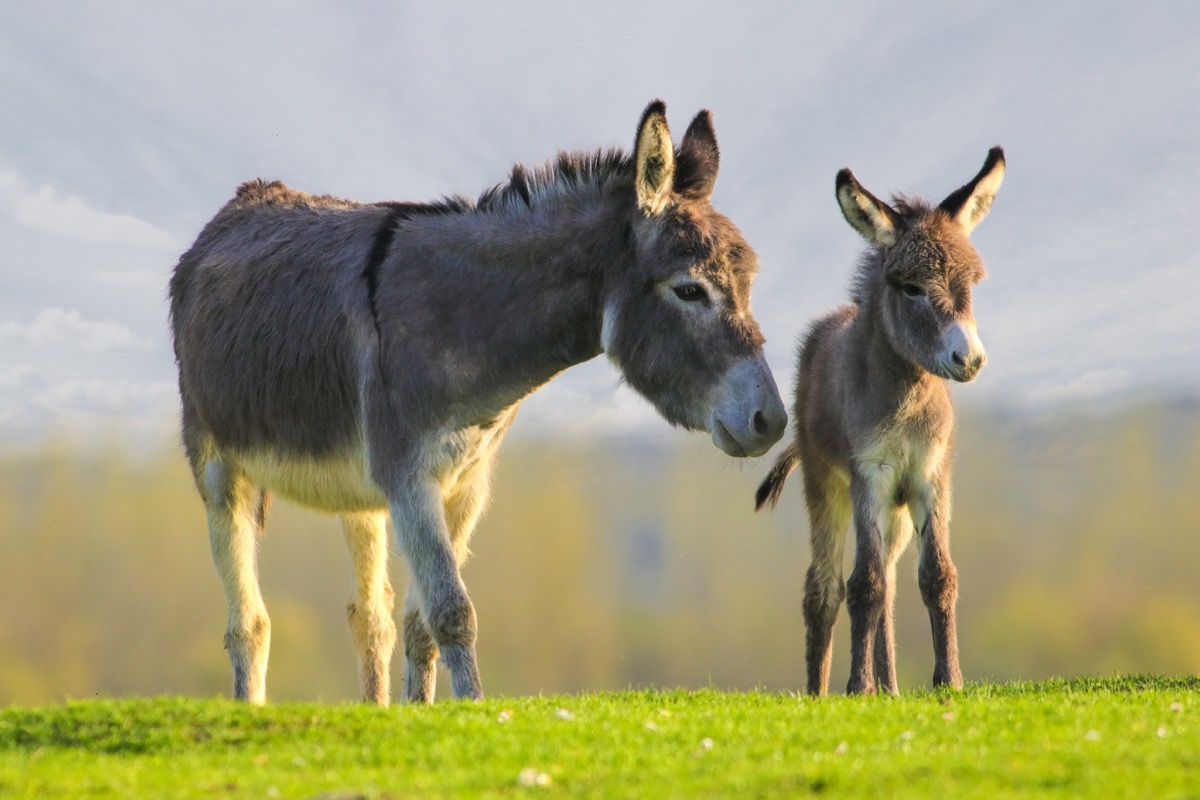
Dogs tend to make great guard animals, but they’re not the only creatures that you can count on to watch your back. In fact, donkeys, dolphins, geese, ostriches, emus, llamas, and alpacas are also used as guard animals around the world—doing everything from protecting sheep to patrolling harbors for the U.S. Navy.
64
The horse on the Wyoming license plate is named Steamboat.

If you live in—or have ever driven through—Wyoming, you might know that there is a horse featured on the state’s license plates. But this isn’t just any old animal. The horse’s name is Steamboat and he was a famous bucking bronco who thrilled rodeo fans from 1901 to 1914.
65
The world’s most toxic mineral is cinnabar.
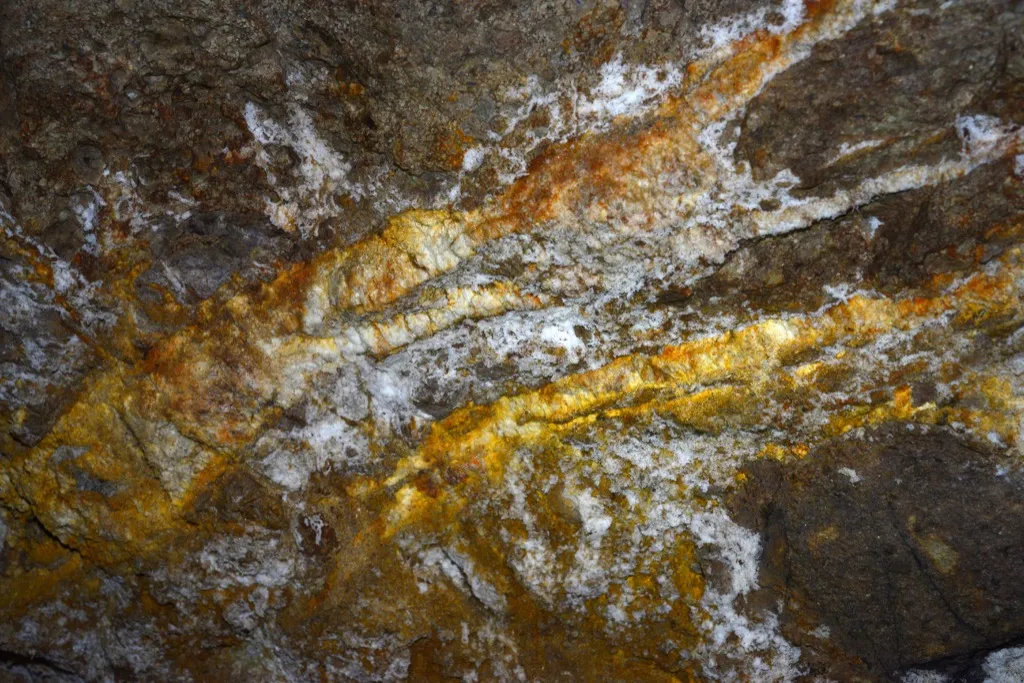
With a color that resembles—and often represents—blood, it makes sense that you wouldn’t want to mess with this stuff. Cinnabar forms near volcanoes and could release pure mercury if disturbed or heated, which could lead to tremors, loss of sensation, and death.
66
Sesame Street is now a real place.

Sesame Street has been a beloved part of children’s lives ever since it premiered on November 10, 1969. That’s why, in May 2019, the city of New York made it a real place. So, if you live in the city that never sleeps and someone asks you, “Can you tell me how to get to Sesame Street?” you can tell them that it’s at the corner of West 63rd and Broadway.
Smithsonian explains the significance of that particular spot, saying, “Since 1969, the non-profit Sesame Workshop, which produces the show, has been based on the block between West 63rd and West 64th at Lincoln Center.”
67
When a piece of bread is toasted, it’s called the “Maillard reaction.”

When you make your morning toast, you are actually witnessing an act of science called the Maillard reaction. As The Atlantic reports, “amino acids and sugars interact to produce the characteristic brown color, texture, and flavor we know as toast. The Maillard reaction is also responsible for the deep flavors of browned barley in beer, roasted coffee, seared meats, and French fries.”
68
The glow around the moon is called a “broch.”

If you’re ever out at night and happen to see a hazy halo of light circling the moon, you can tell anyone you’re with that you’ve spotted a broch, which is a Scottish word used for the weather-related phenomenon—often regarded as an omen of bad weather.
69
Cows have best friends.
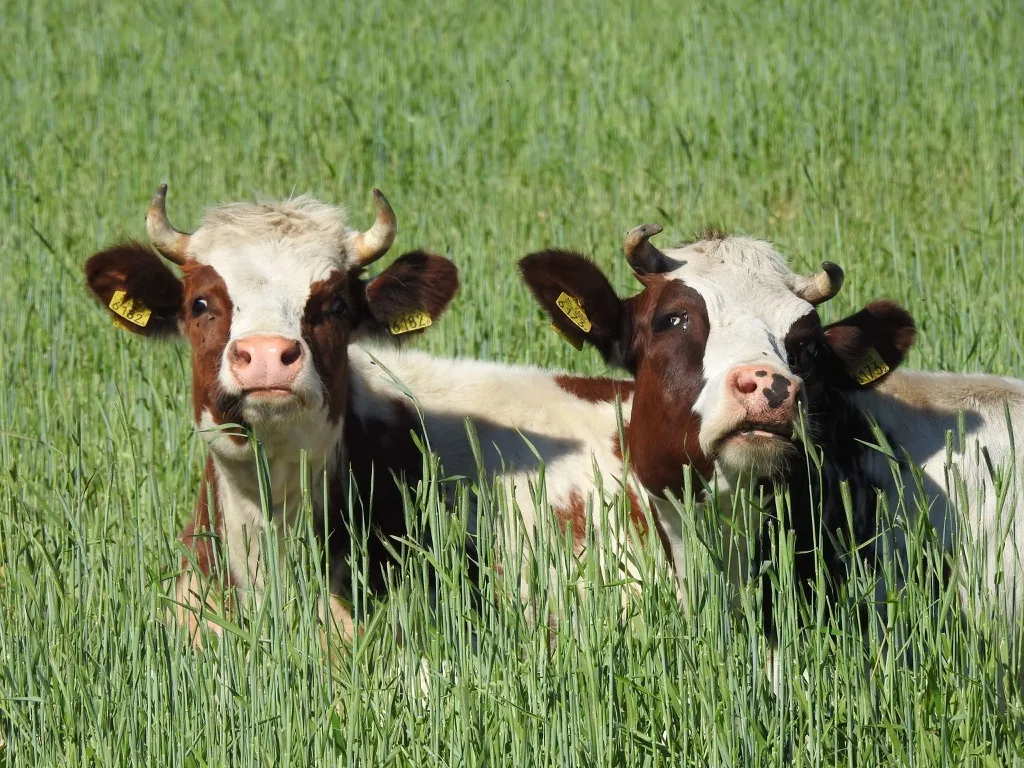
Cows may seem like simple creatures, but deep down, they are surprisingly social and can experience a complex range of emotions and relationships, including friendship. “When heifers have their preferred partner with them, their stress levels in terms of their heart rates are reduced compared with if they were with a random individual,” a researcher from the University of Northampton told the BBC.
70
Surfaces near the equator move much faster than those in other locations on Earth.
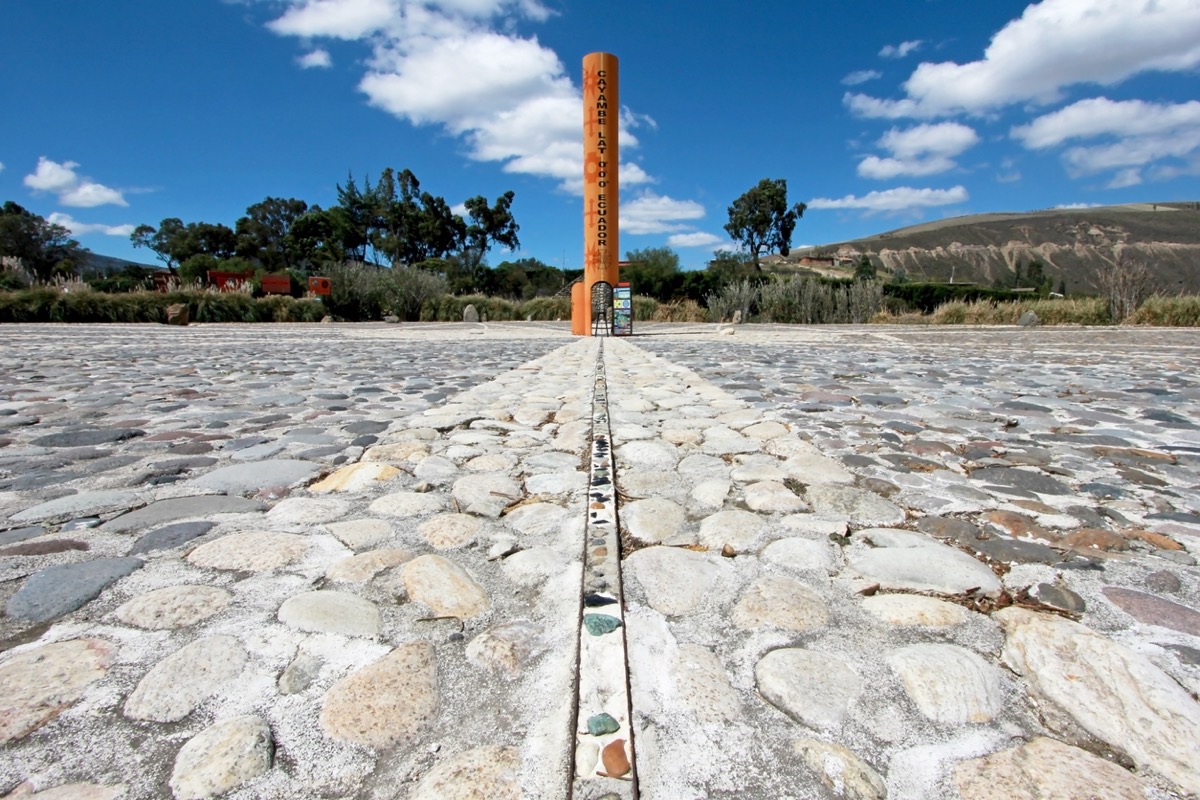
Though the Earth as a whole moves in a circular orbit, not all of its surfaces rotate at the same speed. In fact, according to Scientific American, the surface of the Earth at the equator moves at 360 meters per second—or approximately 1,000 miles per hour—while the speed at the North Pole is effectively zero. (It only rotates once every 24 hours.)
71
A reindeer’s eyes can change colors with the seasons.
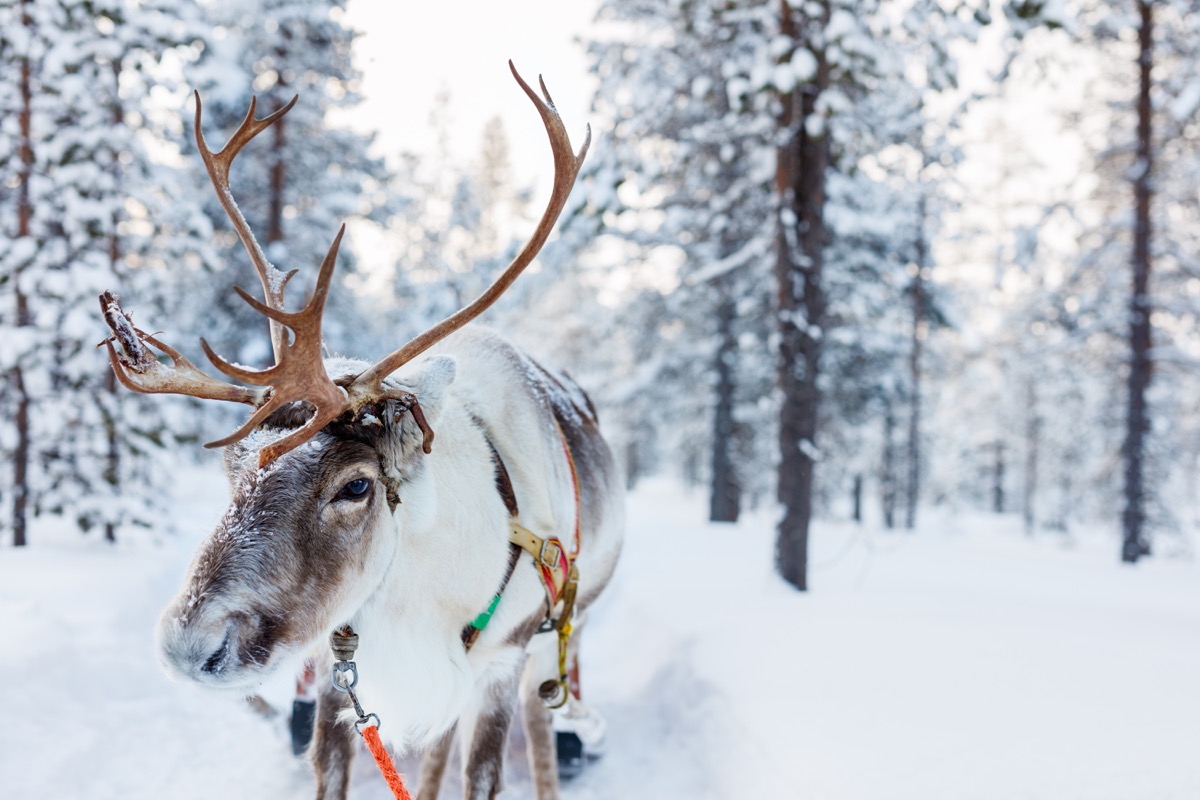
They may not actually fly, but there are some things that are magical about reindeer—specifically, their changing eye color. While their eyes are golden in the summer, they shift to dark blue in the winter to “increase the scatter of reflected light,” which accounts for their seasonal vision sensitivity, according to ScienceNews. Amazing!
72
One area of Canada has a weaker gravitational pull than the rest of Earth.
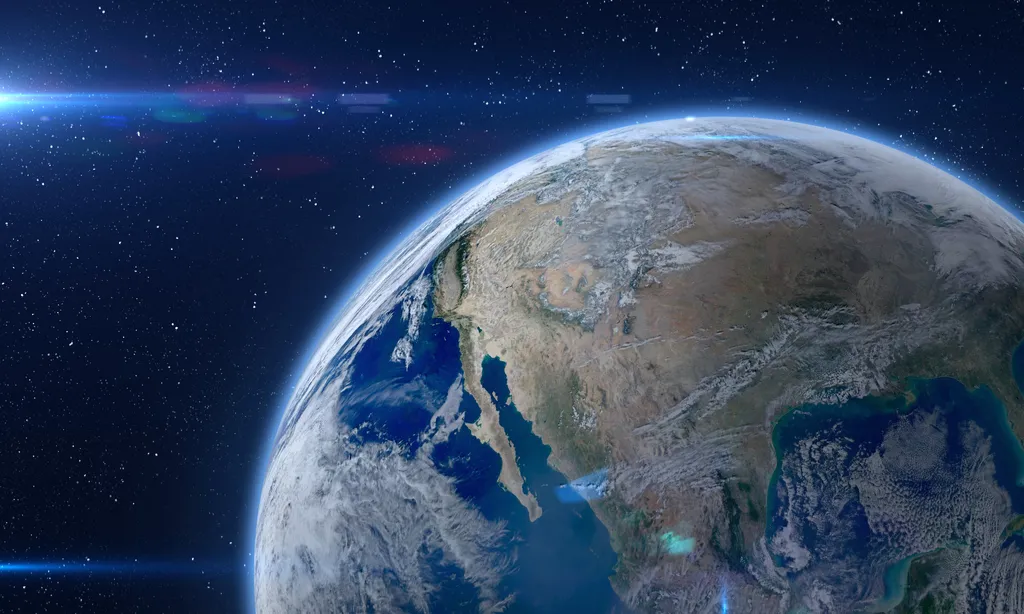
In 2007, a swath of land in northern Canada was found to have unusually low gravitational pulls. The reason for this, according to Science magazine, is because nearly 20,000 years ago, the weight of massive ice glaciers “caused some of the rock beneath to compress and sink, and in the process displace the underlying semifluid mantle.”
73
Sharks “smell in stereo.”
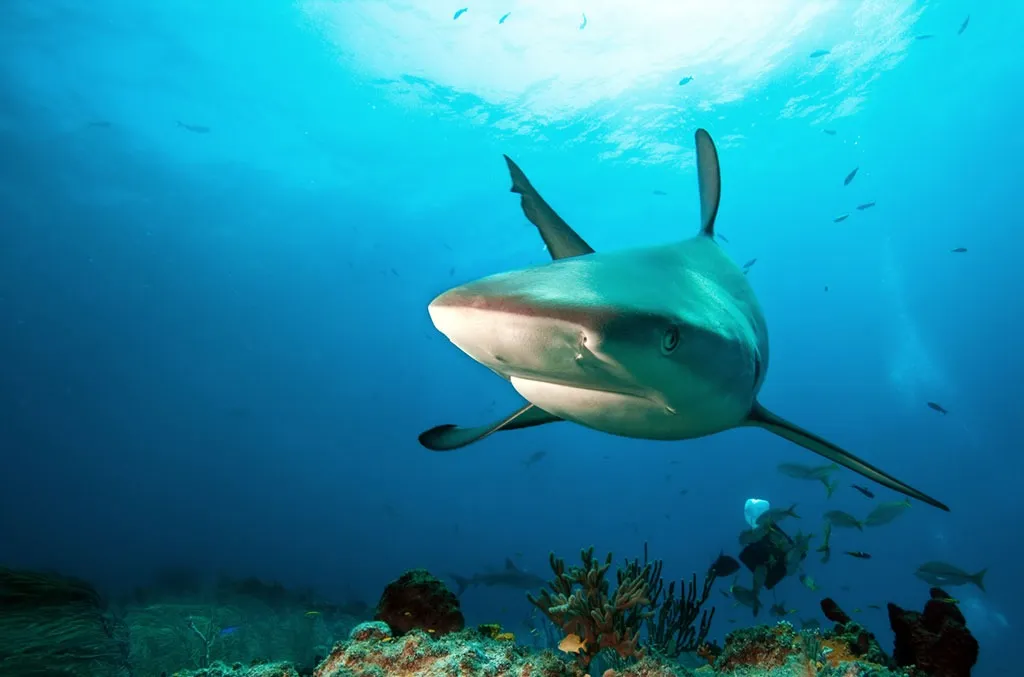
You’re no doubt familiar with a shark’s ability to detect even small amounts of blood in the water from as far as a quarter mile away. However, what you may not realize is that this is due to the animal’s ability to “smell in stereo.”
As reported in the journal Nature in 2010, sharks can detect tiny delays in the time it takes for a scent to reach one nostril compared to the other—even when it’s just a fraction of a second. This delay allows them to determine from which side the scent came and in response, they can head that way in search of prey.
74
Holding a sneeze can be dangerous.

In a 2017 article published in BMJ Case Reports, researchers reported that a 34-year-old British man was hospitalized after attempting to contain his sneeze, trapping air in his trachea, and essentially ripping a hole in the soft tissue of his throat. “Halting sneeze via blocking nostrils and mouth is a dangerous maneuver,” the scientists concluded.
75
Mysterious sand dune holes baffled Indiana for years.
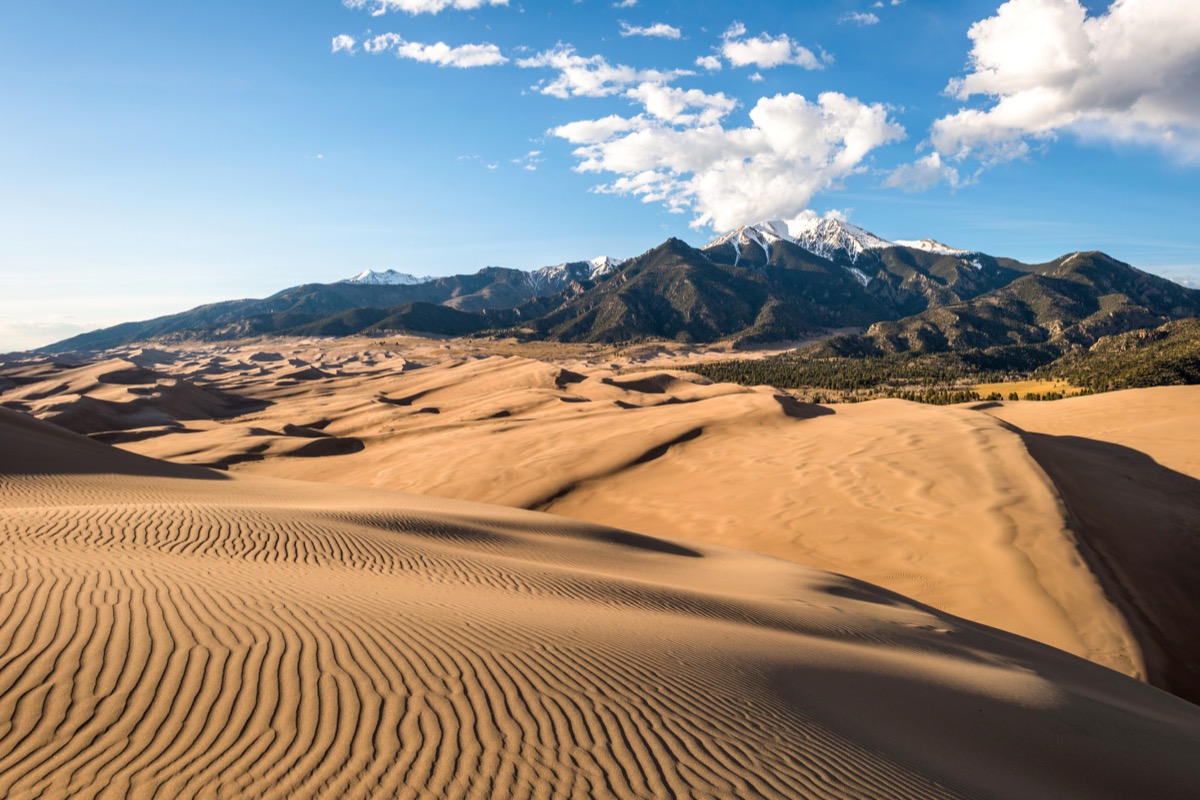
For years, mysterious 10-feet deep sand holes kept appearing, then disappearing in dunes at a national park in Indiana. After multiple people—including a six-year-old boy—fell in, scientists discovered that the holes were formed when sand-covered trees decayed over time.
A 2016 study by Indiana University Northwest’s department of geosciences found that the trees were once covered in fungi that formed a cement-like substance that held its shape even when the tree rotted away. When the cement-like covering and the sand around it eventually gave way, it formed the holes.
76
There are snakes with two heads, which compete with each other for food.
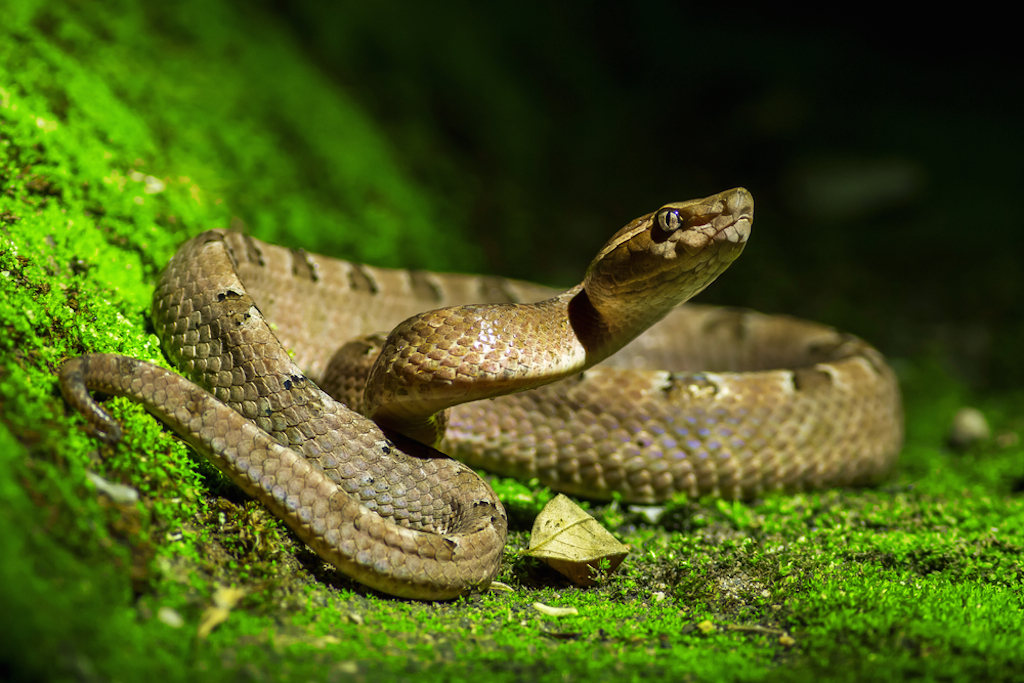
The fact that some snakes are born with two heads is pretty incredible as is, but what about the added detail that these heads are actually two distinct parts that both work with one another and also see each other as competition?
As National Geographic explains of the non-venomous ladder snake Elaphe scalaris: “First the two heads have to decide they’re both hungry at the same time, and then they have to agree to pursue the same prey. Then they might fight over which head gets to swallow the prey. To make it even more complicated, since snakes operate a good deal by smell, if one head catches the scent of prey on the other’s head, it will attack and try to swallow its second head.”
77
The magnetic North Pole is moving.
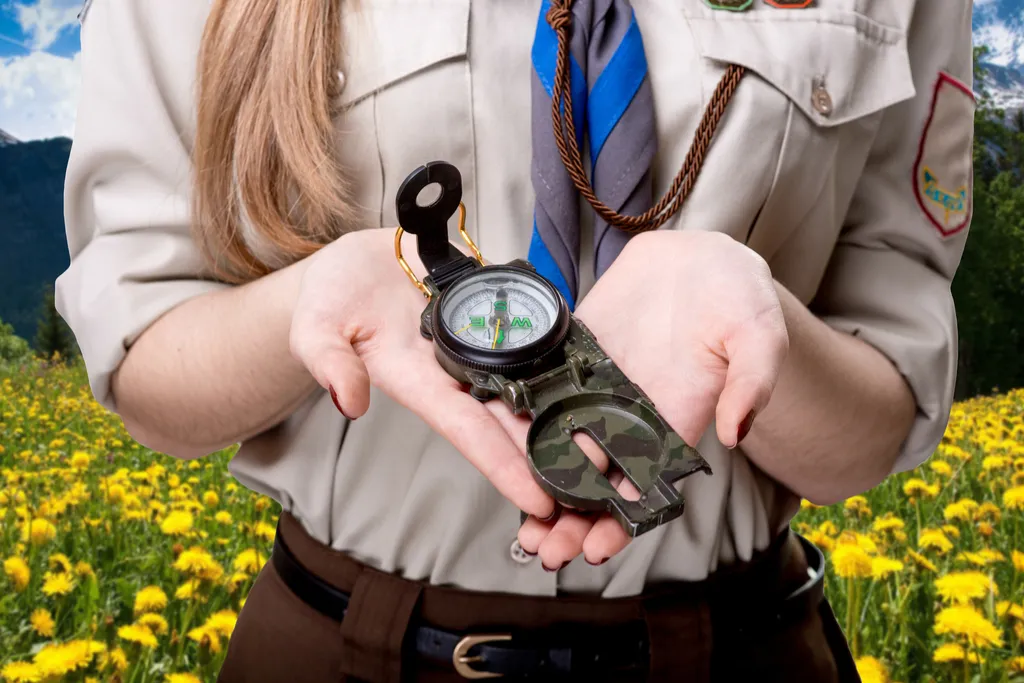
Distinct from the geographic North Pole, the magnetic North Pole—used in compass navigation—is in northern Canada and moves about 10 kilometers a year. As Scientific American explains, the shift occurs “under the influence of the dynamo currents in the Earth’s core, as well as electric currents flowing in the ionosphere, the radiation belts, and the Earth’s magnetosphere.”
78
Jellyfish can sting even when they’re dead.
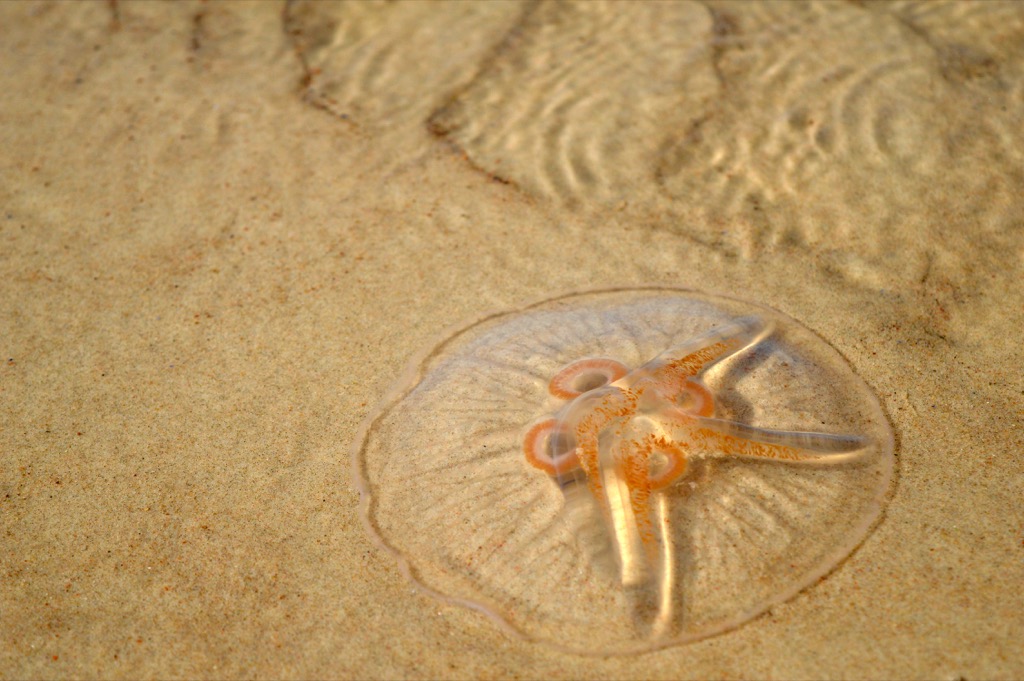
Jellyfish can be a nasty thing to encounter in the water, and they don’t even have to be alive to leave a painful sting on anyone in their path. The New York Times reports that this was something a group of 150 people discovered in 2010 while swimming at Wallis Sands State Park in New Hampshire, when the 40-pound body of a lion’s mane jellyfish floated through the water, stinging at will.
79
Bloodhounds are great marathoners.

At least one particular bloodhound, named Ludivine, sure was! According to CNN, the athletic pooch ran a half-marathon in Alabama in 2016, completing the entire 13.1 miles on her own and finishing in seventh place.
80
Nearly 15 percent of Los Angeles is used as a parking lot.
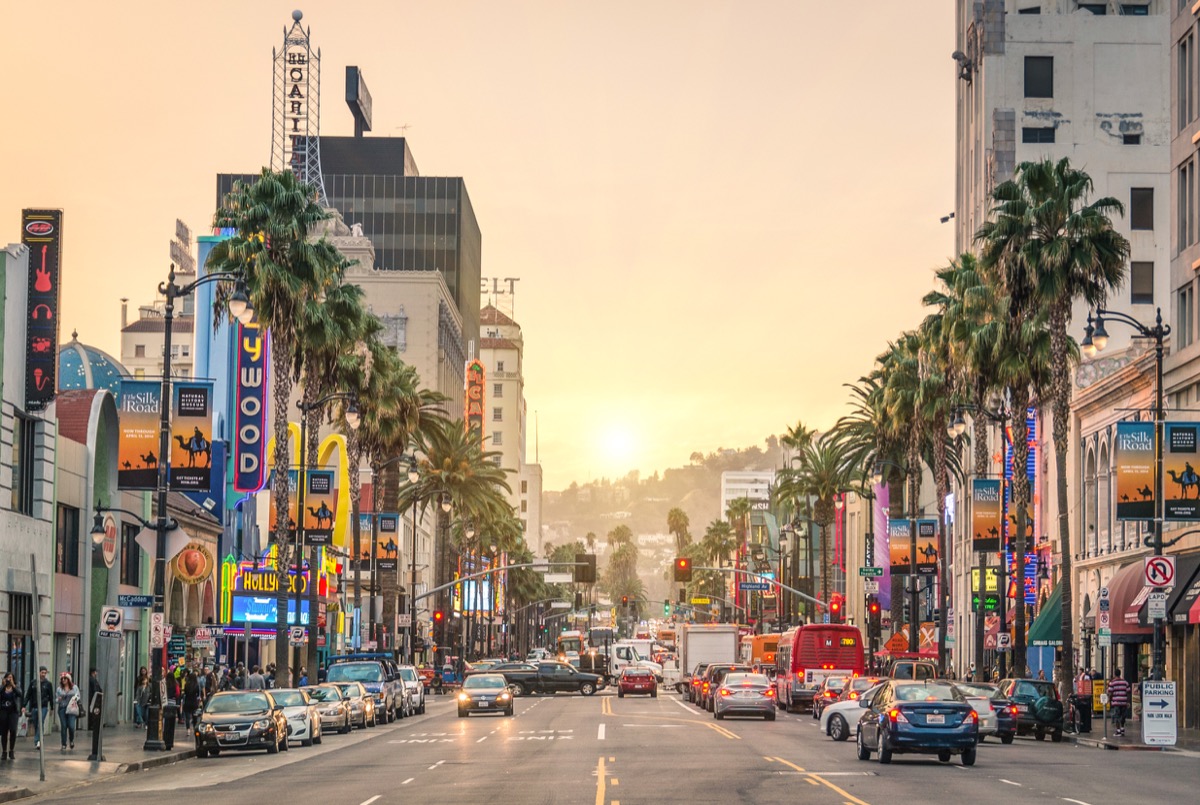
You probably knew Los Angeles is a car-dependent city, but you may not have realized just how dominant automobiles are in shaping the cityscape. In fact, a 2015 study published in the Journal of the American Planning Association was able to determine that 14 percent of the city’s incorporated land is devoted to parking.
81
Earth is not as round as you thought.
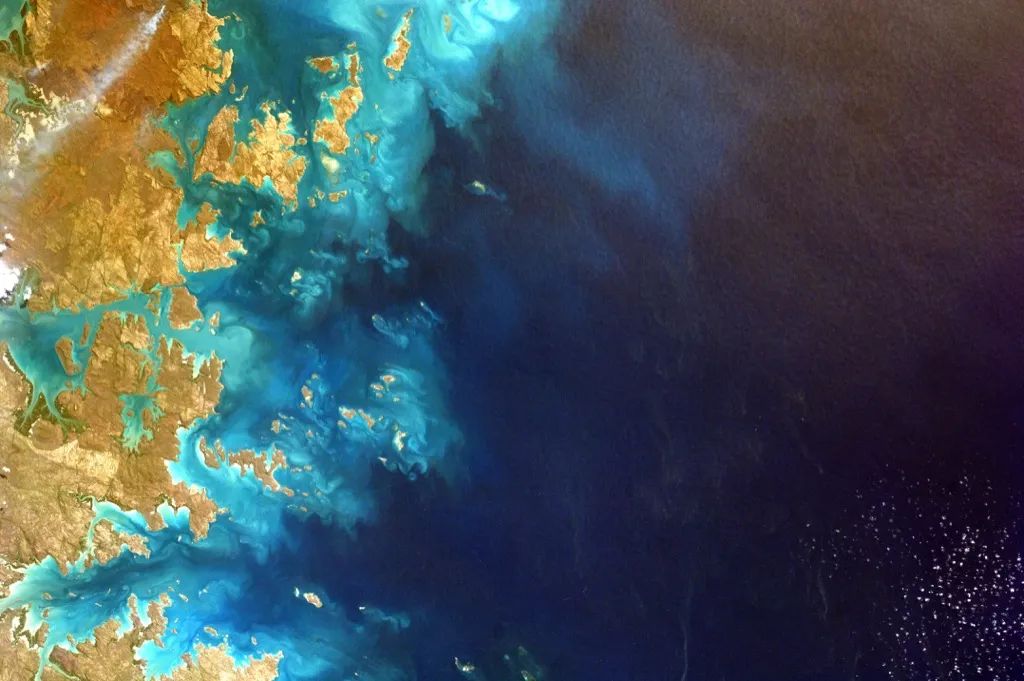
Or at least, it’s not a perfect sphere. As NASA explains, “because of the force caused when Earth rotates, the North and South Poles are slightly flat. Earth’s rotation, wobbly motion, and other forces are making the planet change shape very slowly, but it is still round.”
82
Hippos produce their own sunblock.
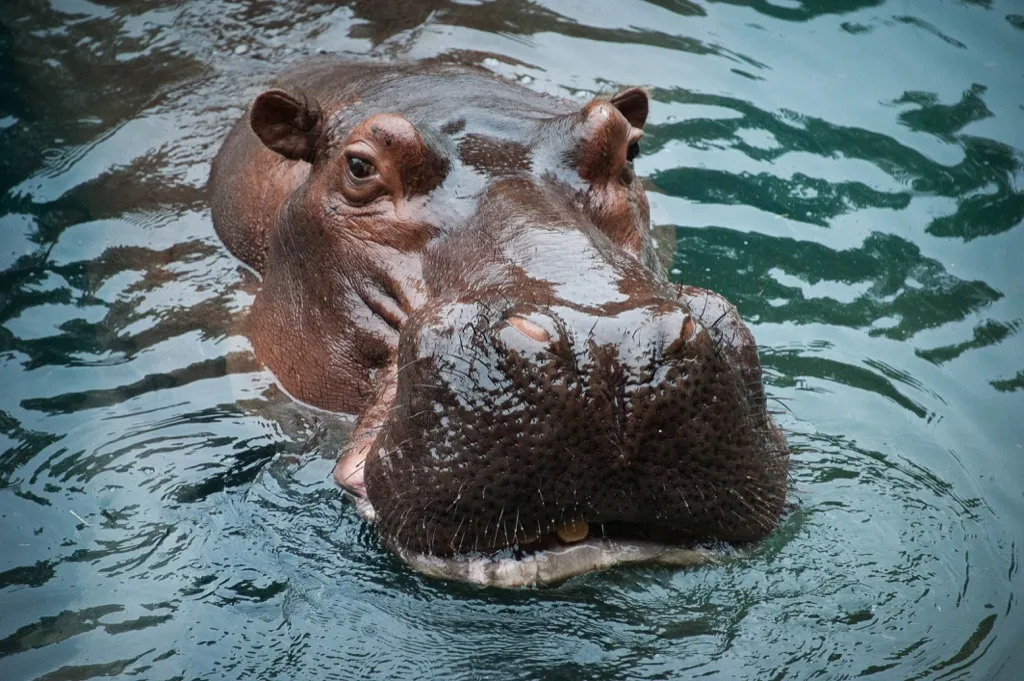
Hippos can work on their tans without having to worry about getting burned since their skin naturally secretes an oily red substance that acts as a moisturizer and sunblock, according to a 2004 article published in the journal Nature. And according to the San Diego Zoo, the red color sometimes makes onlookers believe they’re sweating blood
83
Male seahorses bear their young.
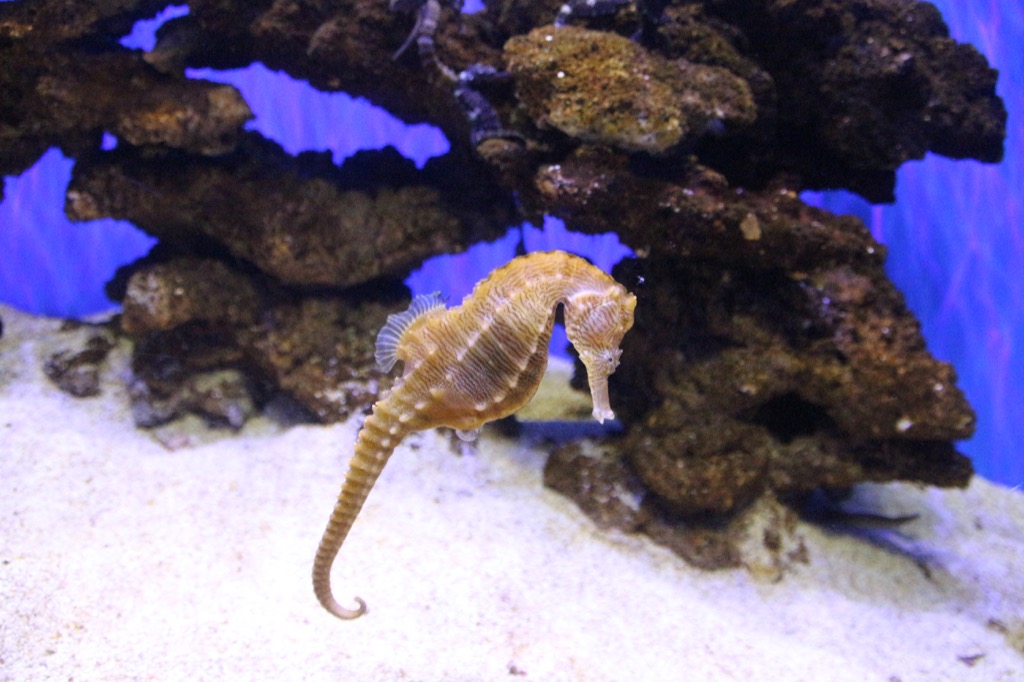
In fact, the seahorse is the only animal on earth in which the male gives birth, according to National Geographic. The female deposits her eggs into the male’s “brood pouch,” where he fertilizes them and carries the eggs until they hatch.
84
A blue whale’s tongue weighs as much as an elephant.
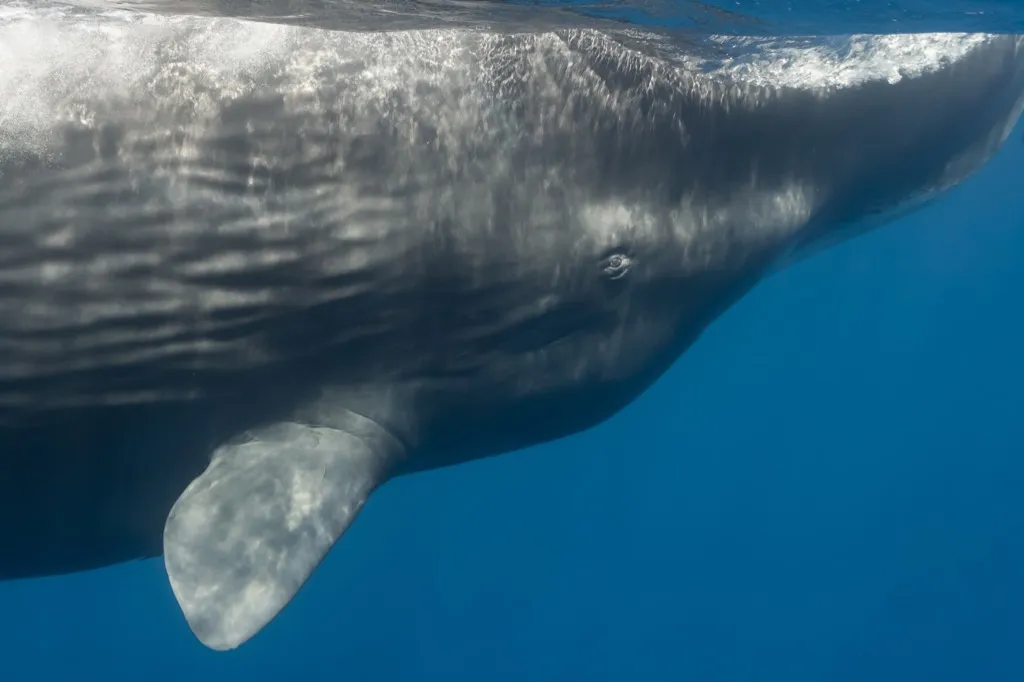
These giants of the ocean—the largest animals ever known to have lived on the planet—can weigh as much as 200 tons, so it probably should not be a surprise that their tongues alone can weigh as much as or more than an adult elephant—up to nearly 4 tons.
85
The loudest animal on earth is the sperm whale.
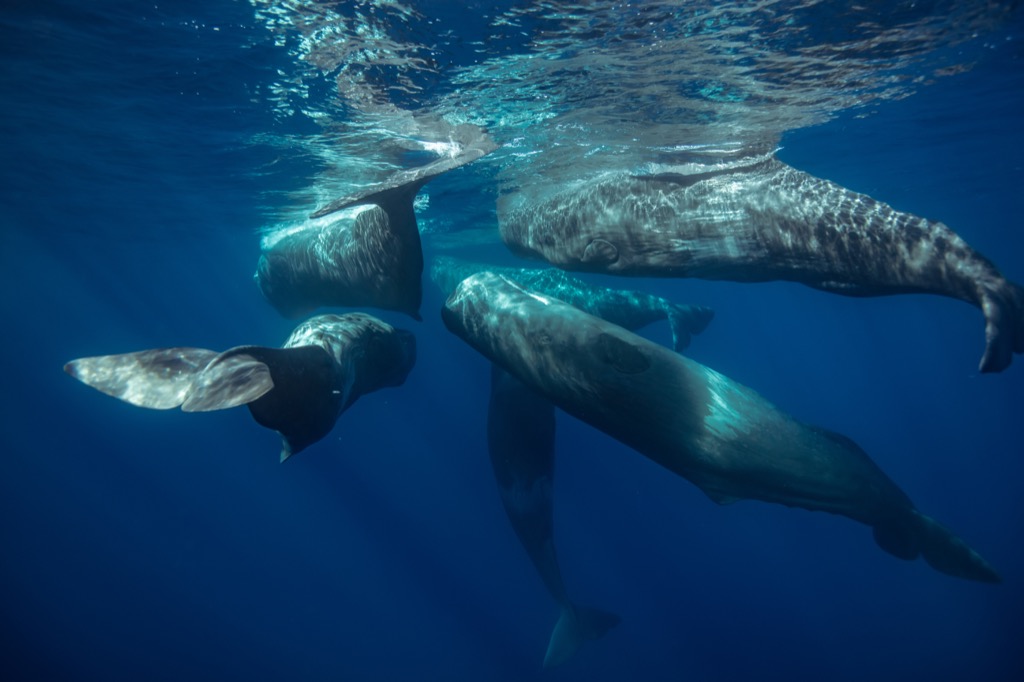
While the blue whale is the largest animal in the world and is often (erroneously) credited with being the loudest, that distinction actually goes to sperm whales, according to the BBC. The clicks they make in order to communicate with other whales get as loud as 230 decibels, compared with the blue whale’s more “modest” 188 decibels.
86
But the loudest animal relative to its size is a water bug.
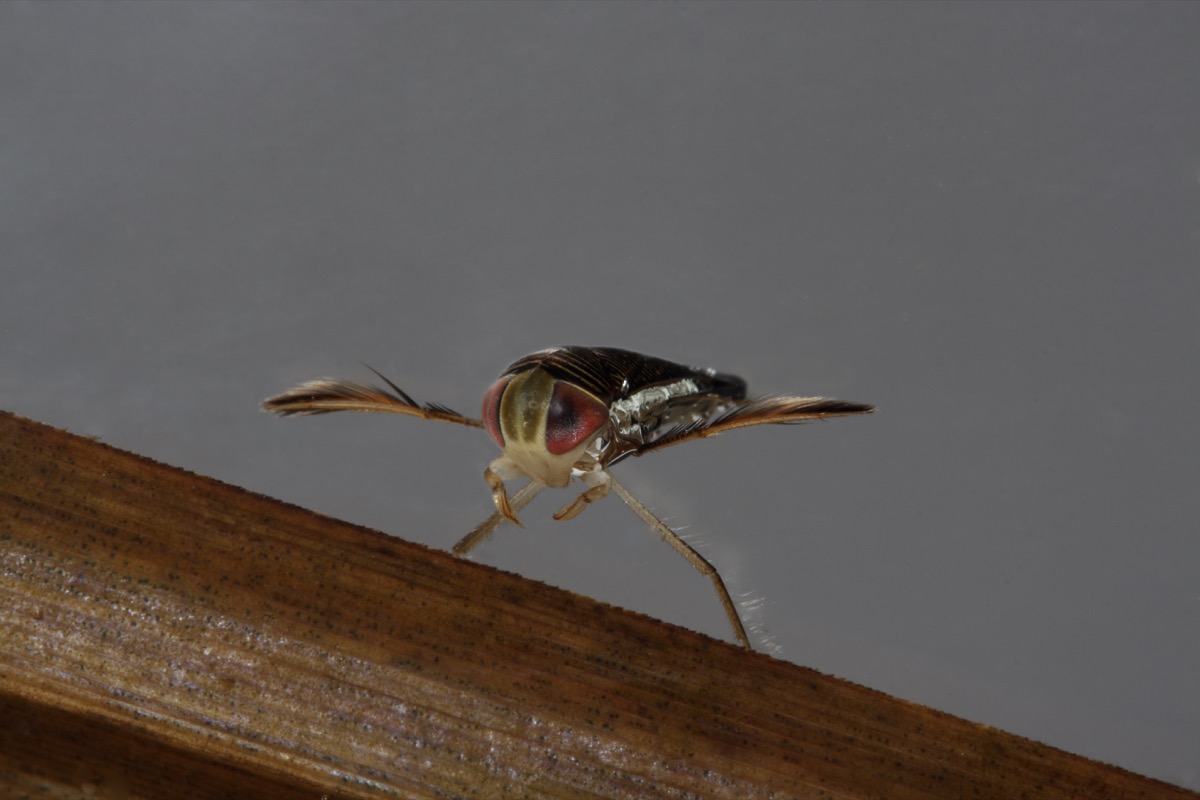
The water boatman species Micronecta scholtzi, which measures just two millimeters in length, “sings” at a level of 105 decibels—roughly the volume of a pounding jackhammer, according to National Geographic. What’s even more interesting about this creature? It makes this chirp via its genitals.
87
An oyster’s sex is fluid.
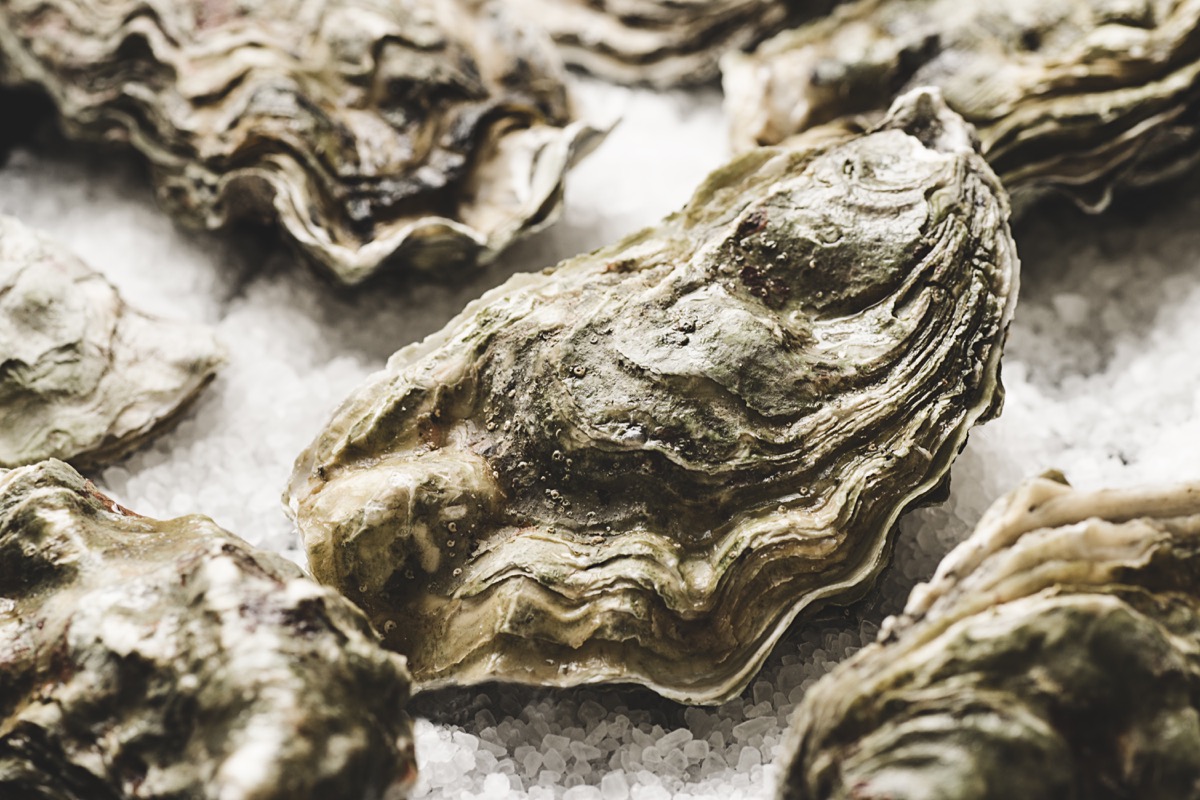
Most oysters, the Los Angeles Times reports, do not have a fixed sex throughout their lifetimes. In fact, given this ability to change sexes, oysters don’t require a mate in order to reproduce.
88
Dogs can learn up to 165 words.
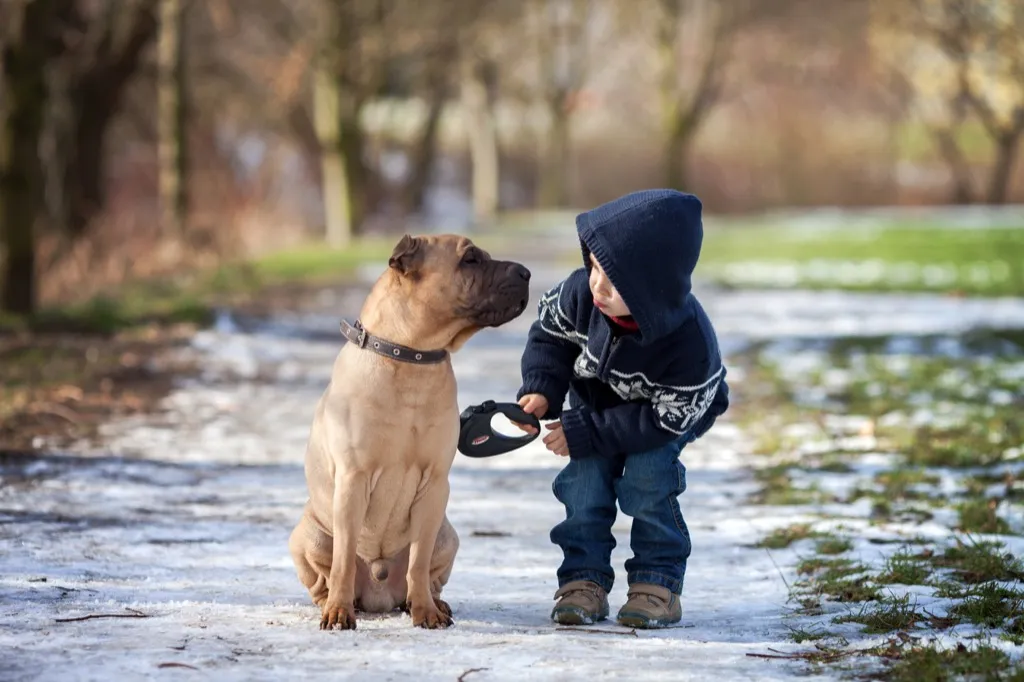
We usually stop after sit, stay, and roll over, but the average dog can actually learn as many as 165 commands. However, as a canine intelligence expert explained to Animal Planet, consistency is key: “If you call his meal ‘supper’ but your spouse calls it ‘dinner,’ the label for his nightly kibble might be fuzzy. But if everyone says ‘dinner,’ he’ll soon perk up anytime you’re discussing dinner plans.”
89
A “jiffy” is an actual unit of time.

Though it varies depending on what it’s measuring, when used in a scientific or mathematic context, a jiffy is typically considered to be 0.01 seconds, or 10 milliseconds.
90
China owns all the pandas in the world.
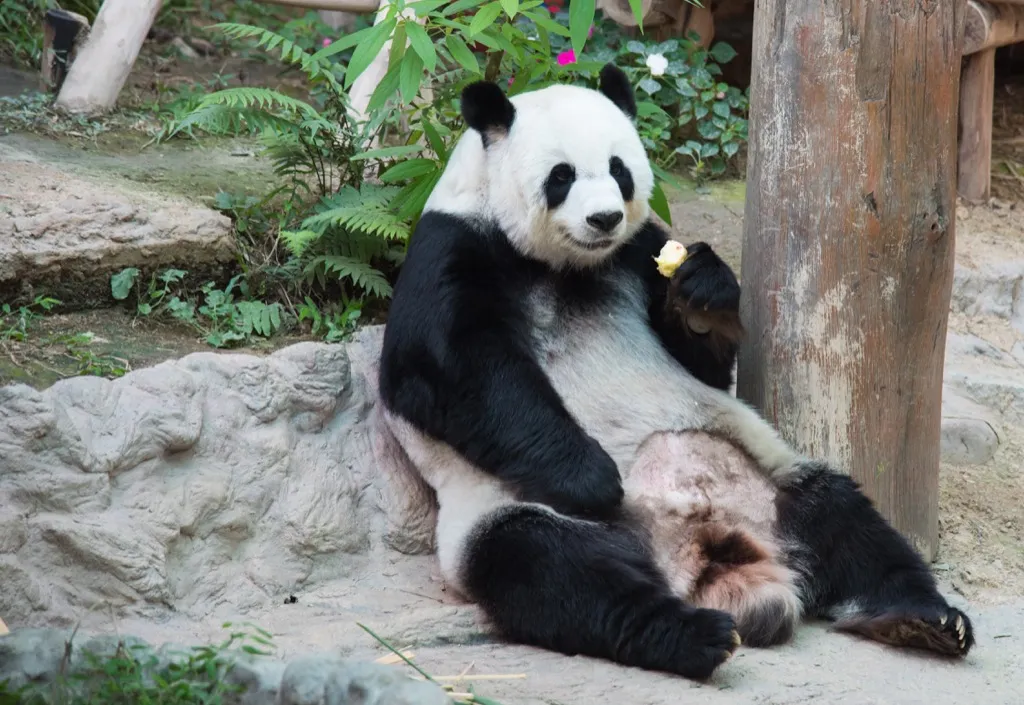
But they are happy to share them—for the right price, of course. Any zoo that wants a panda has to rent it from China, which, Money reports, costs around $1 million a year. What if one of the bears has a baby while in a zoo’s custody? The Chinese government charges a $400,000 cub tax.
91
The woolly mammoth survived until Egyptian times.
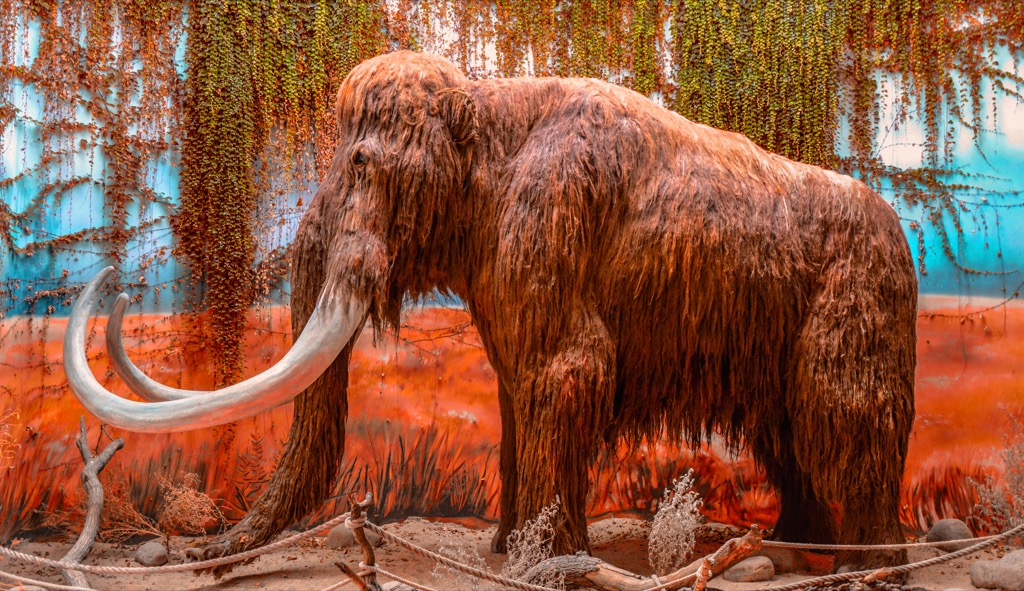
The woolly mammoth stuck around much longer than you might have imagined. According to New Scientist, when the pyramids were being built in ancient Egypt—around 4,000 years ago—the gigantic creatures were believed to have still been walking the Earth. However, these were a particular type of mammoth—a smaller, dwarf-sized variety that was able to adapt better to the changing environmental conditions.
92
Chihuahuas have the biggest brains in the canine world.

At least that is the case in terms of their brain-to-body ratio. Of course, brain size and intelligence do not necessarily correlate, but it might partly explain why these dogs are known for being especially easy to train.
93
A pack of chihuahuas once terrorized a town in Arizona.

That big brain doesn’t mean chihuahuas always use their powers for good. In 2014, residents of Maryvale, Arizona, made about 6,000 calls to local animal control about a pack of the pint-sized pups chasing children.
“We compared the number of calls we got in 2013 from that area to similar areas in town and the calls from Maryvale were three times higher than surrounding areas,” Melissa Gabe, a Maricopa County Animal Care and Control employee, told Time. “Part of it is these animals aren’t spayed or neutered, so they’re out looking for a mate and are having babies, which also contributes to the problem.”
94
Elephants comfort each other with chirps.
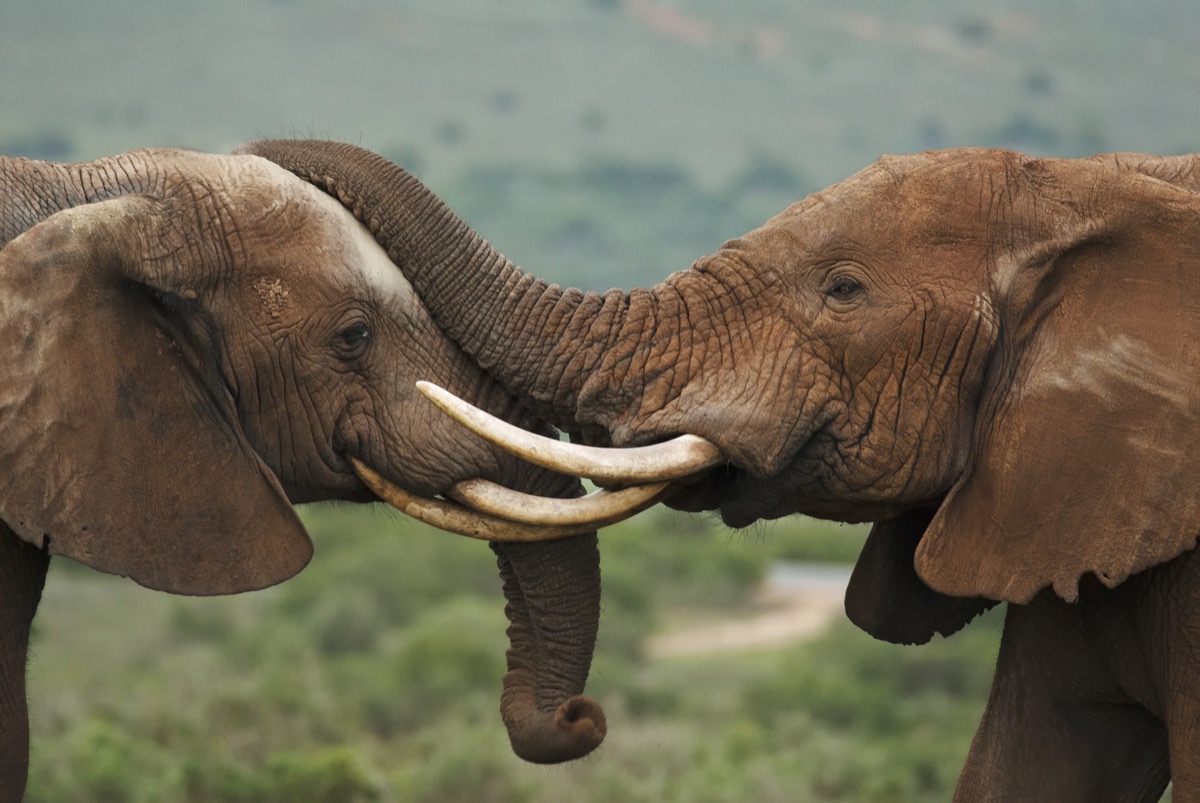
National Geographic reports that when Asian elephants are feeling stressed or upset, their fellow pachyderms will attempt to provide comfort by caressing them with their trunks and offering “chirps of sympathy.”
95
Fleas can jump up to 100 times their body length.
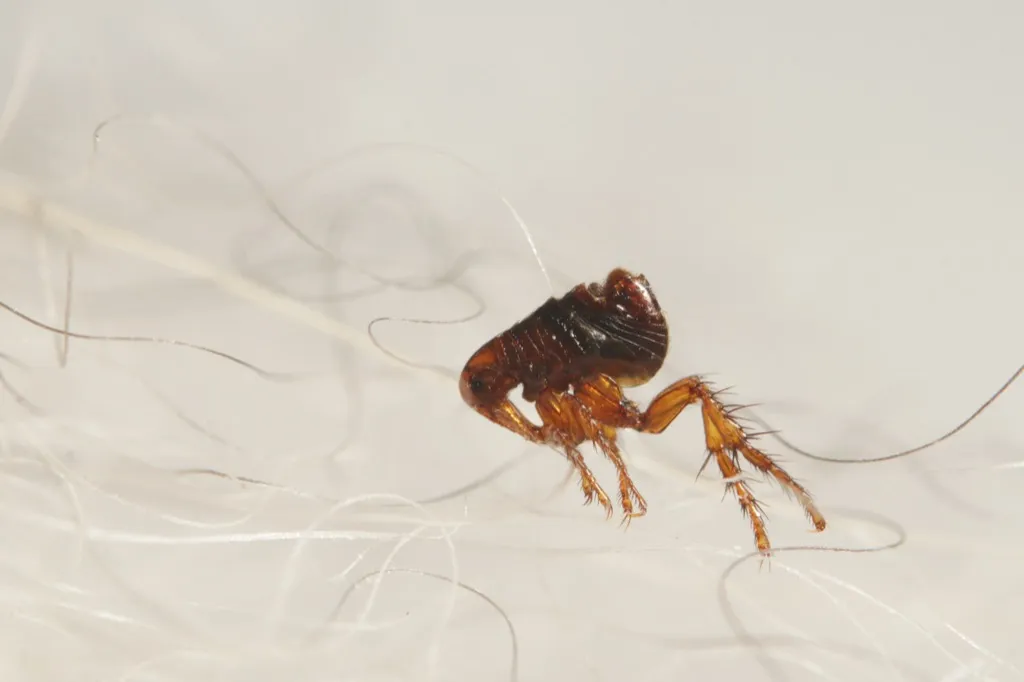
Fleas can jump up to 100 times their body length, thanks to their use of shins and feet, NBC News reports. In 2011, researchers used cameras to film the microscopic jumps, and found that rather than using their knees or upper legs, almost all the action happened in their feet and lower legs.
96
There is a museum of bad art.

Located in Somerville, Massachusetts, the Museum of Bad Art (MOBA) houses a permanent collection of more than 700 pieces that its website says “range from the work of talented artists that have gone awry to works of exuberant, although crude, execution by artists barely in control of the brush. What they all have in common is a special quality that sets them apart in one way or another from the merely incompetent.”
97
There are 293 ways to make change for $1.

If you’ve ever held up a grocery store line trying to make change, then you know how long that process can take. According to the Mathematical Association of America, there are 293 ways to make change for a dollar—that includes half-dollar and one-dollar coins.
98
“Yosemite” means “those who kill.”
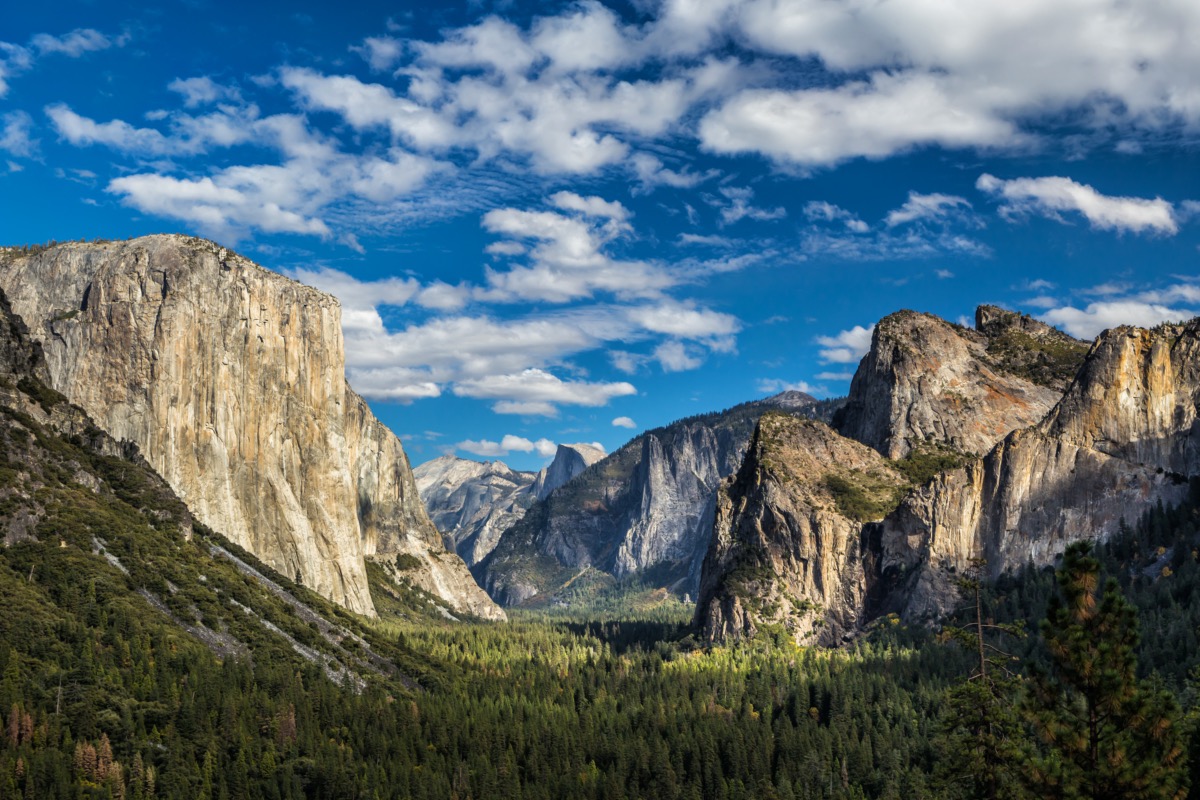
The word comes from the Miwok tribe and was used to refer to a group of renegade enemy tribes living in the Yosemite Valley. And, according to the Yosemite Online Library, the word quite literally means “those who kill.”
99
Peanuts grow underground.
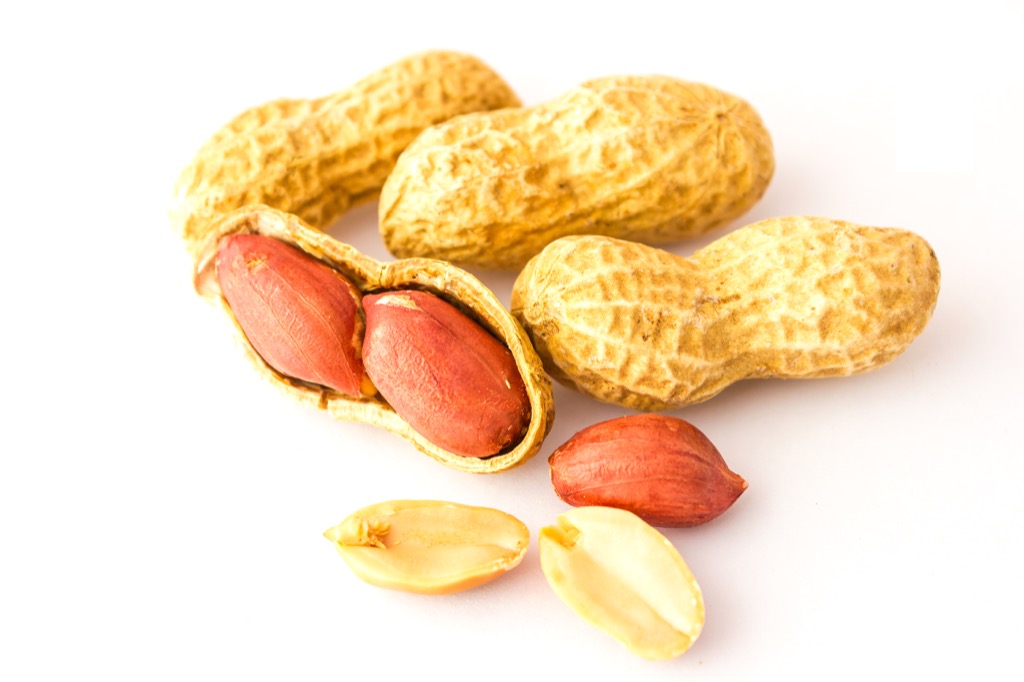
Unlike pecans and walnuts, peanuts grow underground—not on trees. And while we’re on the subject, this also makes peanuts legumes, not technically nuts. They’re planted in early spring and harvested in the fall. Above ground, the plant creates a flower.
100
Earth is 4.54 billion years old.
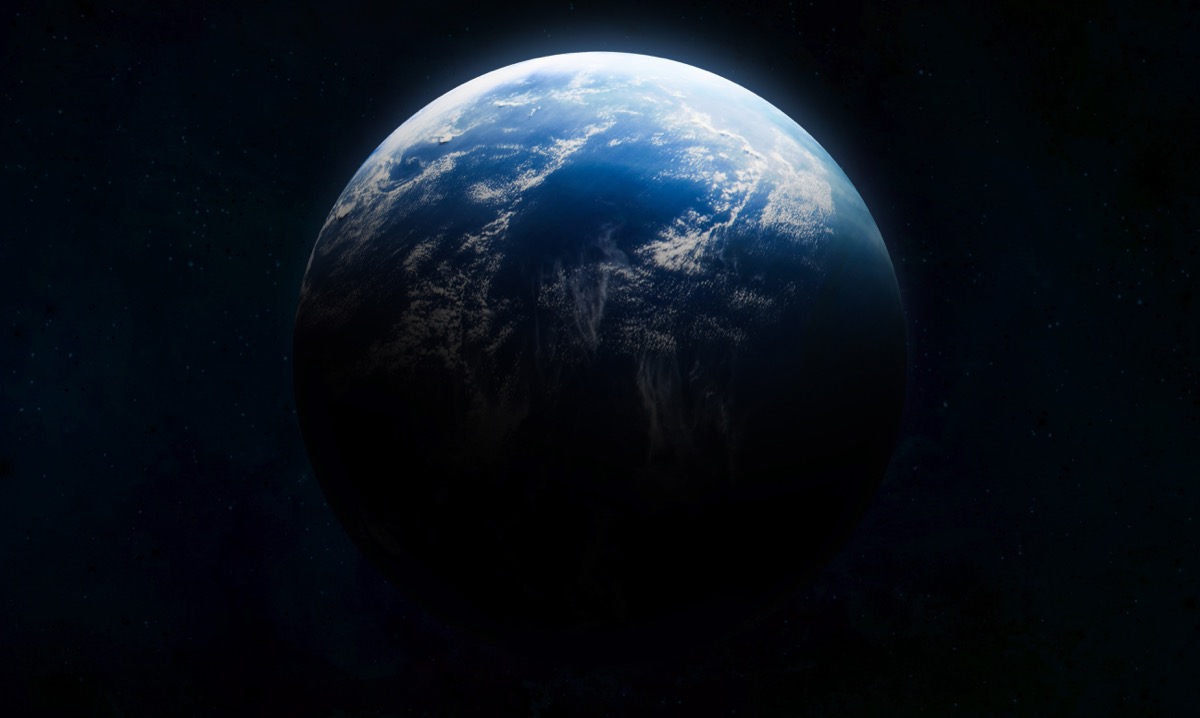
Scientists have used radiometric analysis to figure out our planet’s age. And, according to the The Washington Post, 4.54 billion is the number researchers have come up with—give or take a few million years.